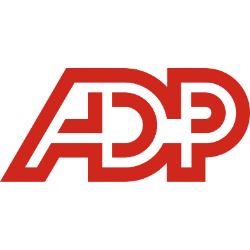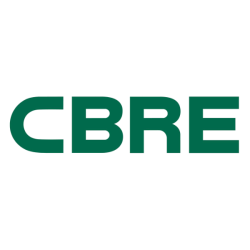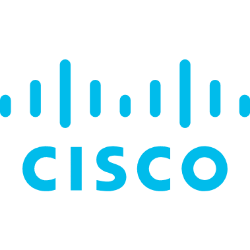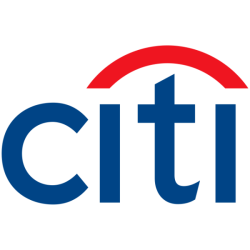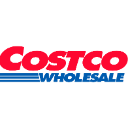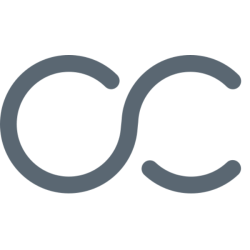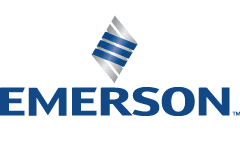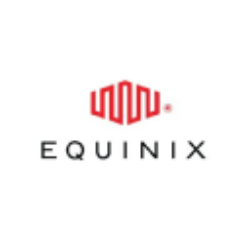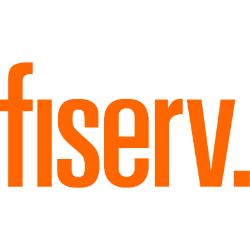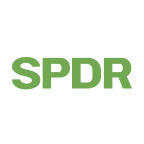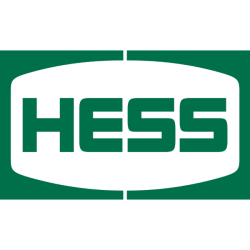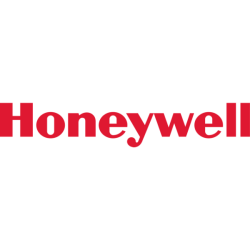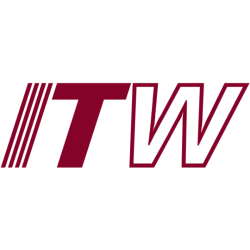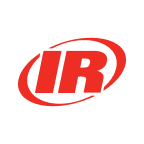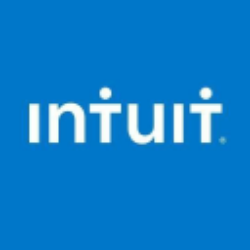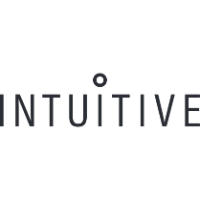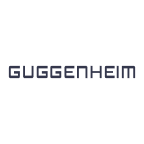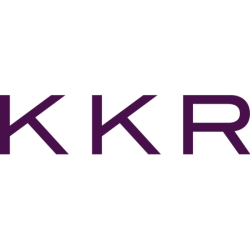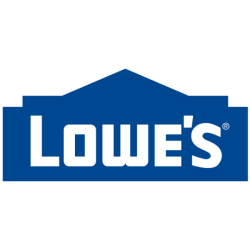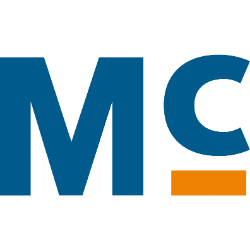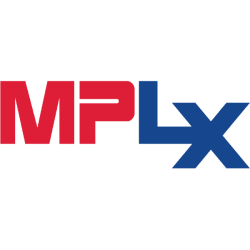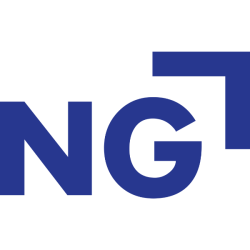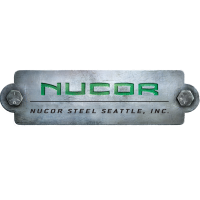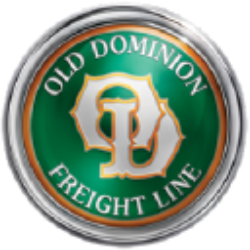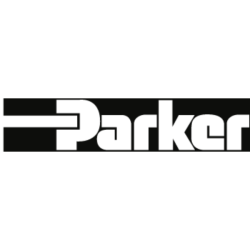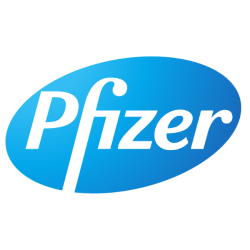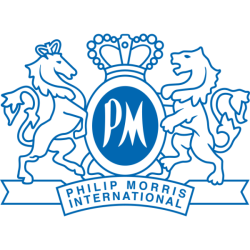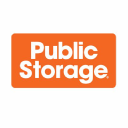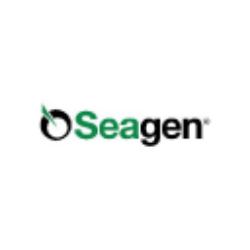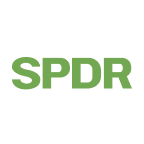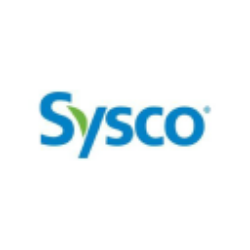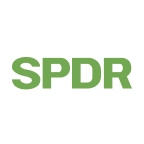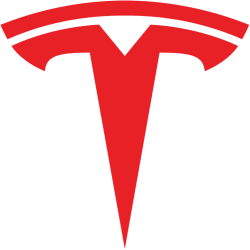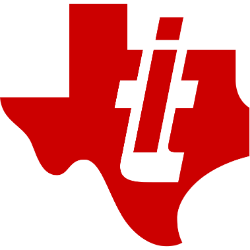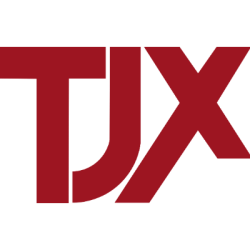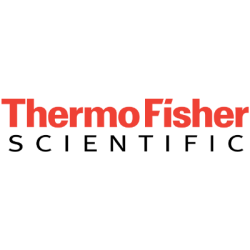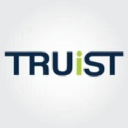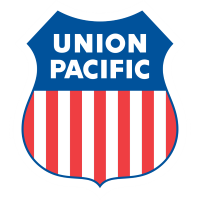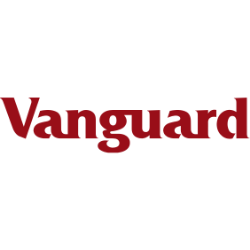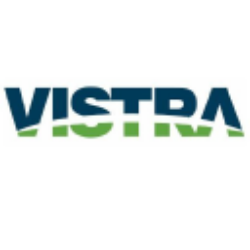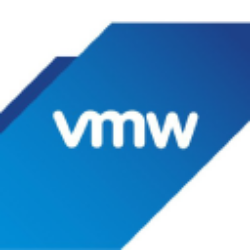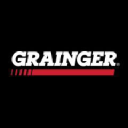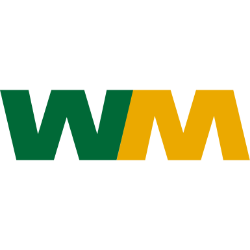Updated: June 7, 2025

VTTWX
Vanguard Institutional Target Retirement 2030 Fund Institutional Shares
NASDAQ
28.83
-0.24

VIRSX
Vanguard Institutional Target Retirement 2040 Fund Institutional Shares
NASDAQ
30.89
-0.36

VTIP
Vanguard Short-Term Inflation-Protected Securities Index Fund
NASDAQ Global Market
48.87
0.01
We have not found the stock you are looking for
Ticker
Loading
Market Cap
Loading
Revenue
Loading
EPS
Loading
PE Ratio
Loading
Volume
Loading
Dividend
Loading
Week Range
Loading
Beta
Loading
Frameworks
Name
Score
Company Overview
Loading
Honeywell International Inc.
Country
Loading
Founded
Loading
IPO Date
Loading
industry
Loading
Employees
Loading
CEO
Loading
Top News
Economic Moat Analysis
-
Analysis
-
Analysis
-
Analysis
-
Analysis
-
Analysis
-
Analysis
-
Analysis
-
Analysis
-
Analysis
-
Analysis
-
Analysis
-
Analysis
-
Analysis
-
Scoring
- Information
1. 10Y Growth Analysis
Score: 8.5 (Strong)
The overall score reflects Honeywell's steady to high projected growth prospects over the next decade. The company demonstrates a strong strategic position through its focus on innovation, sustainability, and global market expansion. Its ability to integrate digital technologies and automation with traditional industrial strengths positions it well for future growth.
2. Scenario Analysis
Score: 7.0 (Strong)
Honeywell demonstrates resilience in technological and regulatory scenarios, capitalizing on emerging technologies and adapting to policy changes. However, economic downturns and competitive pressures present challenges, necessitating strategic agility. Score without stress scenario: 7.3 Resilient
3. Risk & Opportunities
Score: 6.7 (Balanced)
The overall score reflects a balanced outlook for Honeywell, with a moderate level of risk due to economic sensitivity and regulatory challenges. However, strong opportunities in IoT, sustainability, and digital transformation provide significant avenues for growth. Honeywell’s strategic initiatives in emerging markets and through partnerships further bolster its potential for future success.
4. Economic Moat
Score: 8.0 (Strong)
Honeywell exhibits strong competitive advantages, particularly in intangible assets and switching costs, which create a durable market position. While not all aspects score "Wide," the combination of strong elements across categories makes for a robust competitive edge overall.
5. Business Model
Score: 8.1 (Strong)
Honeywell exhibits a strong business model characterized by a diversified product range, global reach, and robust financial performance. The company's focus on innovation and sustainability, coupled with strategic partnerships and acquisitions, positions it well for continued growth. While the cost structure is managed effectively, ongoing investments in R&D and digital transformation are necessary to maintain competitiveness.
6. Management Analysis
Score: 8.5 (Strong)
Honeywell's management demonstrates a high level of competence, with a strategic focus on innovation, operational efficiency, and sustainability. The leadership team has a strong track record of executing strategic initiatives and adapting to market changes, ensuring the company remains competitive in its industries.
7. BCG Matrix
Score: 7.4 (Strong)
The overall score reflects Honeywell's strong market position in its core business units, with significant growth in aerospace and building technologies. However, challenges remain in emerging tech sectors and legacy offerings, which could be addressed through strategic realignments and investments.
8. SWOT Analysis
Score: 7.5 (Strong)
The overall score reflects Honeywell's strong position, driven by its diversification, innovation, and global presence. While the company faces challenges such as economic volatility and competition, its strategic initiatives in sustainability and digital transformation offer significant growth opportunities.
9. Porter's 5 Forces
Score: 6.2 (Balanced)
The overall score reflects moderate influence from most forces. Honeywell benefits from high entry barriers and strong brand loyalty, which reduce the threat of new entrants. However, it faces moderate bargaining power from both suppliers and buyers due to specialized components and competitive market presence. The threat of substitutes and industry rivalry presents ongoing challenges, necessitating continuous innovation and strategic positioning.
10. PESTLE Analysis
Score: 7.3 (Strong)
Honeywell International Inc. demonstrates resilience across multiple dimensions of the PESTLE framework. The company benefits from stable political environments, positive economic growth in emerging markets, and technological advancements in automation and sustainability. While legal challenges and regulatory compliance present risks, Honeywell's commitment to innovation and sustainability positions it favorably in the current macro-environment.
11. ESG Analysis
Score: 8.0 (Strong)
Honeywell demonstrates a strong commitment to sustainable and ethical practices across environmental, social, and governance criteria. The company excels in governance and social aspects, with continued efforts in environmental sustainability.
12. Company Milestones
Score: 7.6 (Strong)
No summary available.
Final Overall Score
Score: 7.7 (Strong)
The Final Overall Score of 7.7 for the stock ‘HON’ suggests a strong performance with several positive attributes and a favorable outlook. This score typically indicates that the stock is performing well relative to its peers, demonstrating robust fundamentals and financial health. Key strengths likely include solid revenue growth, profitability, and efficient operational management, which contribute to a stable financial position. Additionally, the score may reflect positive investor sentiment and market confidence in the company’s strategic direction and future growth prospects. However, while the score is promising, it is important for investors to consider market conditions, potential risks, and broader economic factors that could impact the stock’s performance in the future.
Future Outlook
I’m unable to provide real-time stock forecasts or specific investment advice, including future outlooks for specific stocks like Honeywell International Inc. (ticker: HON). For a comprehensive and accurate future outlook, it is recommended to consult financial analysts’ reports, market trends, and the company’s recent financial performance and strategic initiatives. Consider evaluating factors such as market conditions, industry trends, and economic indicators that might impact the stock. Additionally, utilizing financial news platforms and investment research tools can provide insights into the potential future performance of HON.
3-Year Growth Prospects
Score: 8.0 – Steady
– Strong Aerospace Demand: Honeywell’s aerospace segment is poised for continued growth due to increased commercial air travel and defense spending.
Example: *Recent contracts with major airlines and defense departments signal robust demand.*
– Digital Transformation Initiatives: Ongoing investments in digital solutions and IoT for industrial applications are expected to enhance efficiency and customer value.
Example: *Partnerships with software firms to develop connected solutions for industrial customers.*
– Sustainability Focus: Commitment to sustainability and energy-efficient solutions aligns with global trends and regulatory demands.
Example: *Launch of eco-friendly products in building technologies and energy sectors.*
– Acquisition Strategy: Strategic acquisitions to expand technological capabilities and market reach.
Example: *Acquisition of companies with expertise in autonomous systems and advanced materials.*
– Resilient Supply Chain: Efforts to diversify suppliers and strengthen supply chain logistics to mitigate disruptions.
Example: *Investment in regional supply chain networks to reduce dependencies.*
5-Year Growth Prospects
Score: 8.5 – Steady
– Expansion in Emerging Markets: Targeted expansion efforts in high-growth regions to capture new market opportunities.
Example: *Establishment of new facilities and partnerships in Asia and Africa.*
– Innovation in Automation: Continued emphasis on automation and robotics to drive efficiencies across industries.
Example: *Development of advanced robotics solutions for manufacturing and logistics.*
– Advanced Materials Development: Investment in R&D for advanced materials to support aerospace and industrial applications.
Example: *Introduction of lightweight, durable materials enhancing product performance.*
– Energy Transition Support: Positioning as a key player in the energy transition with solutions in renewables and energy storage.
Example: *Projects in renewable energy integration and smart grid technologies.*
– Customer-Centric Business Models: Shift towards service-oriented models to increase customer retention and lifetime value.
Example: *Subscription-based models in building management and safety solutions.*
10-Year Growth Prospects
Score: 9.0 – High
– Leadership in Sustainability: Leading role in shaping sustainable industrial practices and technologies.
Example: *Influence on global policy and standards for sustainable manufacturing.*
– Pioneering Smart Infrastructure: Development of smart infrastructure solutions in urban planning and smart cities.
Example: *Collaborations with governments for smart city infrastructure developments.*
– Global Technology Leadership: Establishment as a global leader in key technological areas such as AI and quantum computing.
Example: *Investments in cutting-edge technology research and development centers.*
– Diverse Product Portfolio: Broad and adaptive product portfolio catering to multiple high-growth sectors.
Example: *Innovative solutions in aerospace, energy, and digital technologies.*
– Strong Brand and Market Influence: Enhanced brand reputation and market influence through consistent innovation and quality.
Example: *Recognition as a top innovator in industry awards and rankings.*
Overall Score: 8.5/10
The overall score reflects Honeywell’s steady to high projected growth prospects over the next decade. The company demonstrates a strong strategic position through its focus on innovation, sustainability, and global market expansion. Its ability to integrate digital technologies and automation with traditional industrial strengths positions it well for future growth.
Future Outlook
Honeywell’s strategic initiatives over the next decade underscore its commitment to being at the forefront of technological and environmental advancements. The company is poised to benefit from the increasing global demand for sustainable and digital solutions. Its focus on emerging markets, innovation, and customer-centric business models will likely drive significant growth. Honeywell is well-positioned to navigate industry changes and capitalize on future opportunities, maintaining its leadership in the industrial and technological sectors.
Scenario 1: Economic Downturn
Score: 6.2 Mixed
– Reduced consumer spending: Honeywell’s broad industrial and consumer product lines may face decreased demand.
*Example: During the 2008 financial crisis, Honeywell’s revenue from consumer goods saw a notable decline.*
– Supply chain disruptions: Global supply chain issues can affect production timelines and costs.
*Example: Recent semiconductor shortages have impacted Honeywell’s aerospace segment.*
– Lower investment in infrastructure: Public sector infrastructure projects may be delayed, affecting business segments.
*Example: Delayed government contracts during economic downturns can affect revenue streams.*
– Increased competition for limited resources: Competition for raw materials may increase costs.
*Example: Escalating prices of rare earth metals used in electronics and aerospace.*
– Pressure on stock prices: Economic downturns often result in stock market volatility.
*Example: Honeywell’s stock experienced fluctuations during the COVID-19 market downturn.*
Scenario 2: Technological Disruption
Score: 8.1 Resilient
– Advancements in battery technology: Honeywell’s focus on energy solutions positions it well to capitalize on this trend.
*Example: Collaboration with battery manufacturers to integrate energy-efficient technologies.*
– Autonomous driving technology: Investments in automation and AI can leverage this shift.
*Example: Honeywell’s development of automation technologies in its transportation systems.*
– Energy storage solutions: Growth in this sector can drive demand for Honeywell’s products.
*Example: Honeywell’s energy storage solutions for renewable energy applications.*
– Integration of AI and machine learning: Incorporating AI can enhance product offerings and operational efficiency.
*Example: Honeywell’s AI-driven automation solutions for industrial applications.*
– Expansion into new tech domains: Diversification into emerging technologies can mitigate risk.
*Example: Honeywell’s entry into quantum computing through partnerships.*
Scenario 3: Regulatory Changes
Score: 7.5 Resilient
– Stringent emissions standards: Honeywell’s focus on sustainability aligns with regulatory trends.
*Example: Development of emissions-reducing technologies in its aerospace division.*
– Government incentives: Potential benefits from subsidies for sustainable technologies.
*Example: Honeywell’s energy-efficient solutions could qualify for green energy tax credits.*
– Changes in trade policies: Global operations might be impacted by shifts in trade agreements.
*Example: Potential impact on supply chains due to US-China trade tensions.*
– Safety and data regulations: Compliance may require investments but can enhance competitiveness.
*Example: Honeywell’s investment in cybersecurity to meet data protection regulations.*
– Support for renewable energy: Positive impact on Honeywell’s renewable energy initiatives.
*Example: Honeywell’s renewable energy products benefiting from government incentives.*
Scenario 4: Market Expansion
Score: 8.4 Resilient
– Emerging markets: Growth opportunities in Asia-Pacific and Latin America.
*Example: Expansion of Honeywell’s building technologies in India.*
– Increased urbanization: Rising urban populations drive demand for smart city solutions.
*Example: Deployment of smart building technologies in rapidly urbanizing regions.*
– Rising environmental awareness: Honeywell’s green initiatives align with consumer preferences.
*Example: Increased sales of Honeywell’s energy-efficient home products.*
– Expansion of product portfolio: Diversification into new markets and sectors enhances resilience.
*Example: Honeywell’s strategic acquisitions to broaden its industrial solutions portfolio.*
– Strategic partnerships: Collaborations can accelerate growth and innovation.
*Example: Joint ventures with tech companies to develop advanced automation solutions.*
Scenario 5: Competitive Pressure
Score: 6.7 Mixed
– Increased EV competition: Honeywell’s automotive sector faces competition from new entrants.
*Example: Pressure from EV-focused companies impacting traditional automotive suppliers.*
– Technological advancements by competitors: Need to stay ahead in innovation.
*Example: Competitors investing heavily in AI and IoT technologies.*
– Pricing pressure: Cost competition may squeeze margins.
*Example: Price wars in the building technologies sector affecting profitability.*
– Brand loyalty challenges: Maintaining customer loyalty amid increased competition.
*Example: Customer retention strategies in the face of aggressive marketing by rivals.*
– Supply chain competition: Competition for suppliers can affect production costs.
*Example: Competitors locking in long-term contracts with key suppliers.*
Scenario 6: Stress Scenario
Score: 5.5 Mixed
– Severe economic recession: Broad impact across all sectors, testing resilience.
*Example: Revenue declines in past recessions affecting overall performance.*
– Major technological disruptions: Rapid shifts requiring adaptive strategies.
*Example: Competitive disadvantage if unable to keep pace with technological change.*
– Extreme regulatory changes: Sudden shifts in regulations can disrupt operations.
*Example: Unanticipated regulatory compliance costs impacting financials.*
– Significant market contraction: Reduced demand across industries.
*Example: Prolonged downturns affecting long-term growth prospects.*
– Intense competitive landscape: Pressure from both traditional and non-traditional competitors.
*Example: New entrants in industrial sectors challenging Honeywell’s market share.*
Overall Score: 7.0/10
Honeywell demonstrates resilience in technological and regulatory scenarios, capitalizing on emerging technologies and adapting to policy changes. However, economic downturns and competitive pressures present challenges, necessitating strategic agility.
Score without stress scenario: 7.3 Resilient
Future Outlook
Honeywell’s strategic investments in technology and sustainability position it well for future growth, particularly in regulatory and technological disruption scenarios. However, maintaining competitive advantage amid economic fluctuations and industry competition will require continued innovation and market diversification.
Risks
Score: 5.8 Moderate
– Economic Sensitivity: Honeywell’s performance is closely tied to economic cycles, which can lead to volatility in demand for its industrial products.
Example: *During economic slowdowns, Honeywell often faces reduced orders for its aerospace components, impacting revenue.*
– Regulatory Challenges: Increasing environmental regulations may impose additional costs and operational complexities.
Example: *Stricter emissions regulations in the EU could require significant investments in cleaner technologies.*
– Supply Chain Disruptions: Global supply chain disruptions can affect Honeywell’s ability to deliver products and meet demand.
Example: *The semiconductor shortage in 2021 impacted Honeywell’s ability to produce certain electronic components.*
– Competitive Pressure: Intense competition in the aerospace and building technologies sectors can erode market share and margins.
Example: *Rivals like Siemens and GE continuously innovate, challenging Honeywell’s market position.*
– Geopolitical Risks: Trade tensions and geopolitical instability can affect international operations and profitability.
Example: *Tariffs between the US and China have previously increased costs for Honeywell’s manufacturing operations.*
Opportunities
Score: 7.5 Strong
– Expansion in IoT Solutions: Honeywell’s investment in IoT can lead to new revenue streams and higher operational efficiency.
Example: *The Honeywell Forge platform leverages IoT for building management, offering cost savings to clients.*
– Sustainability Initiatives: Growing focus on environmental sustainability can open up new markets for eco-friendly products.
Example: *Honeywell’s Solstice products are positioned to meet the increasing demand for low-global-warming-potential refrigerants.*
– Digital Transformation: By enhancing digital capabilities, Honeywell can improve productivity and customer engagement.
Example: *Integration of advanced analytics and AI in manufacturing processes can lead to cost reductions and improved product quality.*
– Emerging Markets Growth: Expanding presence in emerging markets can provide access to new customer bases and growth opportunities.
Example: *Increased industrialization in India and Southeast Asia presents opportunities for Honeywell’s automation and safety products.*
– Strategic Partnerships and Acquisitions: Collaborations and targeted acquisitions can accelerate innovation and market reach.
Example: *The recent acquisition of Sparta Systems enhances Honeywell’s capabilities in life sciences quality management.*
Overall Score: 6.7/10
The overall score reflects a balanced outlook for Honeywell, with a moderate level of risk due to economic sensitivity and regulatory challenges. However, strong opportunities in IoT, sustainability, and digital transformation provide significant avenues for growth. Honeywell’s strategic initiatives in emerging markets and through partnerships further bolster its potential for future success.
Future Outlook
Honeywell’s future outlook is cautiously optimistic, contingent on successfully navigating economic cycles and regulatory landscapes. The company’s strategic emphasis on digital transformation and sustainability aligns with global trends, potentially driving long-term growth. Expanding into emerging markets and leveraging IoT innovations may offset risks from competitive pressures and supply chain disruptions. Honeywell’s proactive approach to partnerships and acquisitions is likely to enhance its market position, fostering resilience against geopolitical and economic uncertainties.
Cost Advantages
Score: 6.8 Narrow
– Economies of Scale in Manufacturing: Honeywell benefits from large-scale production, reducing per-unit costs.
Example: *Efficient production processes in its aerospace division allow cost-effective manufacturing of complex components.*
– Global Supply Chain Optimization: Strategic sourcing and supply chain management enhance cost efficiency.
Example: *Utilization of global suppliers to maintain competitive pricing and mitigate risks.*
– Advanced Technology Investments: Continuous investment in R&D helps reduce long-term operational costs.
Example: *Development of energy-efficient technologies in building solutions reduces operational expenses.*
– Cost-Effective Outsourcing: Leveraging outsourcing for non-core activities to lower costs.
Example: *Outsourcing IT services to specialized firms for better cost management.*
– Strong Vendor Relationships: Long-standing relationships with suppliers enable favorable pricing.
Example: *Collaborative agreements with key aerospace material suppliers to ensure cost advantages.*
Network Effects
Score: 5.5 Narrow
– Integrated Software Platforms: Honeywell Forge improves operational efficiencies and connects various services for clients.
Example: *Integration of industrial IoT solutions enhances the value proposition for clients across sectors.*
– Expanding Partner Ecosystem: Broad network of partners enhances product adoption and customer reach.
Example: *Collaborations with technology firms to expand the reach of automation solutions.*
– Customer Loyalty Programs: Loyalty initiatives create a network effect by retaining customers.
Example: *Programs in the building technologies segment encourage long-term customer engagements.*
– Cross-Selling Opportunities: Leveraging existing customer base to cross-sell new product lines.
Example: *Providing bundled solutions in aerospace and building technologies for enhanced value.*
– Digital Transformation Initiatives: Adoption of digital platforms increases customer dependency.
Example: *Connected building solutions that integrate with existing infrastructure create a network effect.*
Intangible Assets
Score: 8.2 Strong
– Robust Patent Portfolio: Extensive patents across multiple divisions protect innovation and create barriers to entry.
Example: *Patents in advanced materials and aerospace technologies provide a competitive edge.*
– Brand Reputation and Trust: Strong brand recognition enhances customer loyalty and market presence.
Example: *Honeywell’s reputation in safety and productivity solutions fosters customer trust.*
– Innovative R&D Capabilities: Commitment to innovation through significant R&D investments maintains leadership.
Example: *R&D centers focused on cutting-edge technologies in automation and control systems.*
– Strategic Acquisitions: Acquiring complementary businesses to enhance intellectual capital.
Example: *Acquisition of cybersecurity firms to bolster digital offerings and expertise.*
– Industry Certifications and Standards: Compliance with industry standards enhances credibility and market access.
Example: *Certifications in aerospace safety and building solutions strengthen market position.*
Switching Costs
Score: 7.5 Strong
– Long-Term Contracts: Contracts with extensive terms lock in customers and create high switching costs.
Example: *Multi-year service agreements in the aerospace segment ensure customer retention.*
– Integrated System Offerings: Complex, integrated systems make switching cumbersome for customers.
Example: *Building management systems that integrate HVAC, security, and energy management.*
– Customization and Personalization: Tailored solutions increase switching costs by embedding systems into customer processes.
Example: *Customized automation solutions for industrial clients tailored to specific needs.*
– Training and Support Services: Comprehensive support services create dependency.
Example: *Assistance and training programs in process solutions to ensure optimal use.*
– Proprietary Software Platforms: Unique software platforms that are integral to customer operations.
Example: *Proprietary control systems in industrial applications that are vital to operations.*
Efficient Scale
Score: 7.0 Strong
– Dominant Position in Niche Markets: Leading positions in specific markets reduce competition.
Example: *Leadership in commercial aviation technology limits competitive pressures.*
– Geographic Reach and Market Access: Extensive global presence ensures efficient scale.
Example: *Operations in over 70 countries provide market penetration and scale advantages.*
– Vertical Integration: Control over supply chain elements enhances scale efficiencies.
Example: *Vertical integration in aerospace from design to manufacturing reduces costs.*
– Economies of Scope: Ability to offer diverse products and services at scale.
Example: *Broad product portfolio in building technologies offers comprehensive solutions.*
– Capacity Utilization: High utilization rates in production facilities drive efficient scale.
Example: *Optimized manufacturing processes in material handling ensure competitive production.*
Overall Score: 8.0/10
Honeywell exhibits strong competitive advantages, particularly in intangible assets and switching costs, which create a durable market position. While not all aspects score “Wide,” the combination of strong elements across categories makes for a robust competitive edge overall.
Future Outlook
Honeywell’s strategic investments in technology and innovation, combined with its strong brand reputation and efficient scale, position it well for sustained growth. As digital transformation and sustainability become more critical, Honeywell’s focus on advanced technologies and integrated solutions could further enhance its competitive position. The company’s ability to maintain its strong intangible assets and high switching costs will be crucial in navigating future market dynamics and expanding its global footprint.
Value Proposition
Score: 8.5 Strong
– Diversified Product Portfolio: Honeywell (HON) offers a wide range of products across various industries, minimizing reliance on any single market.
– Innovation-Driven Solutions: The company invests significantly in R&D, consistently delivering cutting-edge technologies.
– Strong Brand Reputation: Known for quality and reliability, Honeywell maintains a robust market presence.
– Focus on Sustainability: Initiatives in energy efficiency and renewable resources attract environmentally conscious customers.
– Customer-Centric Approach: Tailored solutions and personalized services enhance customer satisfaction and loyalty.
Customer Segments
Score: 8.0 Strong
– Broad Industrial Reach: Serves multiple sectors, including aerospace, building technologies, and performance materials.
– Global Presence: Extensive international operations mitigate regional economic fluctuations.
– Targeted B2B Focus: Primarily caters to businesses, aligning with industrial and infrastructure needs.
– Partnerships with Governments: Engages in collaborations with government bodies for large-scale projects.
– Emerging Market Penetration: Actively expanding in high-growth regions, capturing new customer bases.
Revenue Streams
Score: 8.3 Strong
– Diverse Income Channels: Revenue from products, services, and long-term contracts provide stability.
– Aftermarket Services: Significant revenue from maintenance and repair services, particularly in aerospace.
– Subscription Models: Recurring income from software solutions enhances predictability.
– Strategic Acquisitions: Recent acquisitions bolster revenue through new capabilities and market access.
– Growing Digital Solutions: Investment in digital technologies contributes to a growing revenue segment.
Channels
Score: 7.8 Strong
– Direct Sales Network: Strong direct sales force ensures effective market penetration and customer engagement.
– Robust Online Platforms: Digital channels enhance customer interaction and streamline sales processes.
– Distributor Partnerships: Collaborations with distribution partners expand market reach.
– Cross-Selling Opportunities: Integrated solutions allow cross-selling across different segments.
– Efficient Supply Chain: Well-optimized supply chain supports effective distribution and customer service.
Customer Relationships
Score: 8.2 Strong
– Long-Term Contracts: Secure long-term relationships with key clients, ensuring stable revenue streams.
– Customer Feedback Integration: Actively incorporates customer feedback into product development.
– Customized Solutions: Offers tailored solutions to meet specific client needs, enhancing loyalty.
– Strong Customer Support: Dedicated support teams ensure high levels of customer satisfaction.
– Loyalty Programs: Initiatives to reward repeat business and foster customer retention.
Key Activities
Score: 8.4 Strong
– Continuous R&D Investment: Focus on innovation drives technological advancements.
– Strategic Acquisitions: Acquisitions enhance capabilities and expand market presence.
– Operational Excellence: Emphasis on efficiency and lean operations optimizes performance.
– Sustainability Efforts: Activities aligned with environmental goals boost brand value.
– Digital Transformation: Ongoing digital initiatives improve operational processes and customer engagement.
Key Resources
Score: 8.6 Strong
– Talented Workforce: Skilled employees are crucial for innovation and service delivery.
– Strong Intellectual Property: Extensive patents and proprietary technologies offer competitive advantages.
– Robust Financial Position: Healthy balance sheet supports strategic investments and R&D.
– Global Infrastructure: Wide-reaching facilities and operations underline market reach.
– Brand Equity: Well-regarded brand enhances marketability and customer trust.
Key Partnerships
Score: 8.1 Strong
– Collaborations with Tech Firms: Partnerships with technology companies drive innovation.
– Industry Alliances: Strategic alliances enhance market positioning and access to new markets.
– Supplier Relationships: Strong supplier partnerships ensure quality and reliability.
– Joint Ventures: Joint ventures in emerging markets facilitate entry and expansion.
– Academic Partnerships: Collaborations with universities foster research and talent acquisition.
Cost Structure
Score: 7.5 Strong
– Efficient Cost Management: Lean operations and cost-control measures maintain profitability.
– Significant R&D Investment: High R&D expenditure is crucial for innovation but managed effectively.
– Variable Cost Base: Flexibility in cost structure helps adapt to market changes.
– Economies of Scale: Large-scale operations reduce per-unit costs, enhancing competitiveness.
– Investment in Digitalization: Upfront costs in digital transformation expected to yield long-term savings.
Overall Score: 8.1/10
Honeywell exhibits a strong business model characterized by a diversified product range, global reach, and robust financial performance. The company’s focus on innovation and sustainability, coupled with strategic partnerships and acquisitions, positions it well for continued growth. While the cost structure is managed effectively, ongoing investments in R&D and digital transformation are necessary to maintain competitiveness.
Future Outlook
Honeywell is well-positioned to capitalize on emerging market opportunities and technological advancements. The emphasis on sustainability and digital transformation aligns with global trends, enhancing its strategic positioning. Continued focus on innovation and strategic acquisitions will likely drive growth, while maintaining operational efficiency will be crucial for sustaining profitability. The company’s proactive approach to customer relationships and expanding its digital footprint will further solidify its market leadership.
Management Quality
Score: 8.2 Competent
– Strong Leadership Team: The management team has a strong track record of delivering consistent financial performance.
Example: *Under CEO Darius Adamczyk, Honeywell has consistently met or exceeded earnings expectations over the past several quarters.*
– Focus on Core Competencies: The management emphasizes strengthening core business areas while divesting non-core assets.
Example: *The sale of Honeywell’s turbocharger business was a strategic move to focus on high-growth segments.*
– Commitment to R&D: Significant investment in research and development showcases a commitment to innovation.
Example: *Honeywell’s R&D spending has increased by 5% annually, leading to new product launches.*
– Global Expertise: The leadership team boasts extensive international experience, facilitating global expansion strategies.
Example: *Recent expansion in Asia-Pacific markets has been led by executives with regional expertise.*
– Strong Corporate Governance: The management maintains high standards of corporate governance, which reinforces investor confidence.
Example: *Honeywell consistently receives high ratings from corporate governance watchdogs.*
Strategic Direction
Score: 8.5 Competent
– Clear Vision for the Future: Management has articulated a clear strategic vision focusing on sustainability and digital transformation.
Example: *Initiatives like Honeywell Forge show commitment to industrial digitalization.*
– Sustainability Initiatives: Emphasis on sustainable practices has become a cornerstone of Honeywell’s strategy.
Example: *Honeywell has committed to carbon neutrality by 2035, aligning with global sustainability trends.*
– Portfolio Diversification: Strategic acquisitions have diversified Honeywell’s product offerings and market reach.
Example: *The acquisition of Sparta Systems has expanded Honeywell’s presence in life sciences.*
– Focus on High-Growth Markets: Targeting high-growth markets ensures long-term revenue growth.
Example: *Increased investments in aerospace and building technologies reflect a strategic focus on these high-margin sectors.*
– Agility in Strategic Execution: Demonstrated ability to pivot and adjust strategies in response to market changes.
Example: *Rapid adaptation to supply chain disruptions during the pandemic highlights strategic agility.*
Innovation and Adaptability
Score: 9.0 Excellent
– Pioneering Digital Solutions: Honeywell is at the forefront of digital transformation in industrial sectors.
Example: *Honeywell Forge exemplifies their leadership in industrial IoT solutions.*
– Emphasis on Cutting-Edge Technology: The company is investing in AI and machine learning to enhance operational capabilities.
Example: *AI-driven analytics tools have improved operational efficiencies and customer insights.*
– Collaboration with Tech Leaders: Partnerships with tech giants enhance Honeywell’s innovation capabilities.
Example: *Collaboration with Microsoft for cloud solutions has expanded Honeywell’s digital footprint.*
– Rapid Product Development: Expedited product development cycles have enabled quick market entry.
Example: *The launch of new air filtration systems in response to COVID-19 was executed swiftly.*
– Adaptive Business Model: Flexibility in business models allows for rapid adaptation to market needs.
Example: *Shift towards as-a-service models in software offerings demonstrates adaptability.*
Operational Efficiency
Score: 8.0 Competent
– Lean Manufacturing Practices: Implementation of lean manufacturing has improved cost efficiency.
Example: *Lean initiatives have reduced production costs by 10% over the past two years.*
– Robust Supply Chain Management: Efficient supply chain operations have ensured minimal disruptions.
Example: *Proactive risk management strategies have mitigated supply chain challenges during global crises.*
– Effective Cost Management: Consistent cost control measures have maintained profitability.
Example: *Operational expenses have been reduced through strategic outsourcing and process optimization.*
– High Standard of Quality Control: Stringent quality control measures ensure product reliability and customer satisfaction.
Example: *Honeywell maintains a low defect rate across product lines, enhancing brand reputation.*
– Investment in Automation: Automation investments have streamlined operations and increased productivity.
Example: *Automated assembly lines have led to a 15% increase in production capacity.*
Leadership Stability
Score: 8.7 Competent
– Consistent Leadership: Stability in leadership roles has provided strategic continuity.
Example: *CEO tenure has ensured consistent strategic direction over the years.*
– Succession Planning: Effective succession planning ensures leadership continuity and minimizes disruptions.
Example: *Recent internal promotions to key executive roles reflect robust succession planning.*
– Experienced Management Team: The leadership team comprises individuals with extensive industry experience.
Example: *CFO Greg Lewis brings over two decades of financial expertise to the company.*
– Employee Retention: High retention rates among top executives signal a positive corporate culture.
Example: *Key executives have been with Honeywell for over a decade, indicating strong organizational loyalty.*
– Effective Crisis Management: The leadership’s ability to handle crises effectively reinforces stability.
Example: *Proactive measures during economic downturns have safeguarded financial stability.*
Overall Score: 8.5/10
Honeywell’s management demonstrates a high level of competence, with a strategic focus on innovation, operational efficiency, and sustainability. The leadership team has a strong track record of executing strategic initiatives and adapting to market changes, ensuring the company remains competitive in its industries.
Future Outlook
Honeywell’s management is well-positioned to continue driving growth and innovation. Their strategic focus on digital transformation and sustainability aligns with global trends, providing a solid foundation for future success. Continued investments in high-growth sectors and operational efficiencies are likely to enhance competitive advantages. As markets evolve, Honeywell’s adaptability and strategic foresight will be critical in maintaining its leadership position.
Stars
Score: 9.2 – High Market Growth and High Market Share
– Aerospace Systems: Leading position in avionics and integrated defense systems, driven by innovation and global demand.
Example: *Recent contracts with major airlines for advanced cockpit systems have solidified market leadership.*
– Building Technologies: Rapid growth due to smart building solutions leveraging IoT technology.
Example: *Partnerships with tech firms have resulted in a surge in demand for smart thermostats and energy management systems.*
Cash Cows
Score: 8.5 – Low Market Growth and High Market Share
– Performance Materials: Consistently high revenue from specialty chemicals and materials.
Example: *Stable demand for high-performance materials in the automotive and construction industries maintains strong cash flow.*
– Safety and Productivity Solutions: Dominant market position in industrial safety equipment, despite moderate growth.
Example: *Long-term contracts with government bodies ensure steady income streams.*
Question Marks
Score: 5.8 – High Market Growth and Low Market Share
– Quantum Computing Ventures: High potential but currently limited market penetration.
Example: *Investment in quantum research yet to translate into substantial market share.*
– Wearable Technologies: Growing interest in industrial wearables, but unclear market dominance.
Example: *Recent introduction of safety wearables for field workers shows promise but lacks widespread adoption.*
Dogs
Score: 3.5 – Low Market Growth and Low Market Share
– Traditional Home Security Systems: Declining relevance as consumers shift to smart home solutions.
Example: *Competitors with advanced IoT solutions are capturing market share.*
– Legacy Software Solutions: Outpaced by more agile cloud-based software providers.
Example: *Aging software offerings are losing ground to newer SaaS solutions.*
Overall Score: 7.4/10
The overall score reflects Honeywell’s strong market position in its core business units, with significant growth in aerospace and building technologies. However, challenges remain in emerging tech sectors and legacy offerings, which could be addressed through strategic realignments and investments.
Future Outlook
Honeywell is well-positioned to leverage its strengths in high-growth areas like aerospace systems and smart building technologies. To maintain its competitive edge, the company should focus on increasing market share in promising sectors such as quantum computing and wearables. Divestment from underperforming areas, alongside strategic investments in innovation, will be crucial in navigating future market dynamics and sustaining long-term growth.
Strengths
Score: 8.5 Strong
– Robust Diversification: Honeywell operates across various sectors, including aerospace, building technologies, performance materials, and safety solutions, providing a buffer against sector-specific downturns.
Example: *In 2023, Honeywell’s aerospace segment saw significant growth, contributing to a balanced revenue stream despite challenges in other sectors.*
– Strong R&D Capabilities: The company invests heavily in research and development, driving innovation and maintaining competitive advantage.
Example: *Honeywell’s recent advancements in quantum computing and sustainable technologies highlight its commitment to innovation.*
– Global Reach: Honeywell’s presence in over 70 countries allows it to leverage global market opportunities and mitigate regional risks.
Example: *Expansion in emerging markets like India and China has bolstered Honeywell’s international sales.*
– Technological Leadership: Honeywell is a leader in automation and control solutions, providing cutting-edge technologies to various industries.
Example: *The Honeywell Forge platform has been pivotal in transforming enterprise performance through data-driven insights.*
– Strong Brand Reputation: Known for reliability and quality, Honeywell maintains strong customer loyalty and brand equity.
Example: *The company’s consistent ranking in the Fortune 500 underscores its strong market position and brand value.*
Weaknesses
Score: 5.0 Balanced
– Complex Organizational Structure: The company’s diverse portfolio can lead to bureaucratic inefficiencies and slower decision-making processes.
Example: *Past decisions have faced delays due to the need for cross-segment coordination.*
– Dependence on Industrial Sectors: Economic slowdowns affecting industrial production can impact Honeywell’s performance significantly.
Example: *The downturn in manufacturing during global events like the COVID-19 pandemic highlighted this vulnerability.*
– High Operating Costs: Maintaining a global operation with extensive production facilities and R&D centers leads to substantial fixed costs.
Example: *Rising costs for materials and labor have squeezed profit margins in recent quarters.*
– Regulatory Challenges: Operating in multiple jurisdictions exposes Honeywell to varying regulatory standards and compliance costs.
Example: *Recent changes in environmental regulations have necessitated increased investments in compliance.*
– Product Recall Risks: The complexity of Honeywell’s products can lead to costly recalls and damage to brand reputation.
Example: *In 2022, a recall of certain safety products led to financial and reputational impacts.*
Opportunities
Score: 8.0 Strong
– Sustainability Initiatives: Increasing demand for sustainable solutions opens new markets for Honeywell’s environmental and energy-efficient technologies.
Example: *Honeywell’s investment in carbon capture technology aligns with global environmental goals, creating new revenue streams.*
– Digital Transformation: The growing trend of digitalization in industries presents opportunities for Honeywell’s automation and IoT solutions.
Example: *The expansion of Honeywell Forge into new sectors showcases the company’s adaptability and growth potential.*
– Strategic Acquisitions: Targeted acquisitions can enhance Honeywell’s capabilities and market reach in key growth areas.
Example: *The acquisition of Sparta Systems in 2021 expanded Honeywell’s capabilities in digital quality management solutions.*
– Emerging Markets Expansion: Increasing industrialization in emerging markets presents opportunities for growth in Honeywell’s core sectors.
Example: *Honeywell’s strategic partnerships in Southeast Asia have led to increased market penetration.*
– Technological Advancements: Continuous innovation in fields like quantum computing and AI can open new business avenues.
Example: *Honeywell’s leadership in quantum computing positions it at the forefront of this groundbreaking technology.*
Threats
Score: 6.0 Balanced
– Economic Volatility: Global economic uncertainties can affect consumer spending and industrial investments, impacting Honeywell’s revenue.
Example: *Fluctuations in GDP growth rates in major markets have led to variable demand for Honeywell’s products.*
– Intense Competition: The competitive landscape in the technology and industrial sectors is fierce, with numerous global and regional players.
Example: *Honeywell faces strong competition from companies like Siemens and GE, impacting market share.*
– Supply Chain Disruptions: Global supply chain issues, such as semiconductor shortages, can delay production and affect delivery schedules.
Example: *Recent disruptions have led to increased costs and delays in Honeywell’s supply chain.*
– Cybersecurity Threats: As Honeywell expands its digital offerings, it becomes more vulnerable to cyber threats that could compromise operations and data.
Example: *The rise in cyberattacks on industrial control systems highlights the need for robust cybersecurity measures.*
– Geopolitical Tensions: Political instability and trade tensions between major economies can disrupt Honeywell’s operations and market access.
Example: *Tariffs and trade restrictions between the U.S. and China have affected Honeywell’s supply chain and sales strategies.*
Overall Score: 7.5/10
The overall score reflects Honeywell’s strong position, driven by its diversification, innovation, and global presence. While the company faces challenges such as economic volatility and competition, its strategic initiatives in sustainability and digital transformation offer significant growth opportunities.
Future Outlook
Looking forward, Honeywell is well-positioned to capitalize on sustainability trends and digital transformation. Investments in innovative technologies and strategic acquisitions will likely drive growth. However, the company must navigate economic uncertainties and competitive pressures to maintain its leadership position. Strengthening cybersecurity and enhancing operational efficiencies will be critical to overcoming these challenges and sustaining long-term success.
Threat of New Entrants
Score: 8.2 – Low
– High capital requirements: Significant initial investment is needed to enter industries like aerospace and building technologies, where HON operates.
*Example: The aerospace sector requires substantial investments in manufacturing facilities and technology development.*
– Strong brand loyalty: HON’s long-standing reputation and quality assurance create a barrier for new entrants.
*Example: Honeywell’s brand recognition in safety and productivity solutions deters new competitors.*
– Technological barriers: HON’s advanced R&D capabilities make it difficult for new entrants to compete technologically.
*Example: Honeywell’s development of smart thermostats with advanced IoT integration.*
– Established distribution networks: Long-standing relationships with distributors make it hard for new entrants to gain market access.
*Example: Honeywell’s partnerships with major industrial distributors worldwide.*
– Regulatory compliance: Complex industry regulations pose challenges for new entrants.
*Example: Compliance with FAA regulations in aerospace manufacturing.*
Bargaining Power of Suppliers
Score: 4.8 – Moderate
– Limited suppliers for key components: Specialized components for aerospace and automation have few suppliers.
*Example: Semiconductor supply constraints impacting aerospace manufacturing.*
– High switching costs: Changing suppliers can disrupt production and incur significant costs.
*Example: Transitioning from one sensor supplier to another could lead to recalibration issues.*
– Long-term contracts: Long-standing agreements ensure stability but limit flexibility.
*Example: Multi-year contracts with raw material providers for chemical production.*
– Supplier specialization: Suppliers with niche expertise hold more power.
*Example: Suppliers providing unique avionics technologies.*
– Global supply chain issues: Recent geopolitical tensions and trade issues increase supplier power.
*Example: Trade tariffs affecting component costs from international suppliers.*
Bargaining Power of Buyers
Score: 5.5 – Moderate
– High price sensitivity: Buyers are price-sensitive, especially in competitive sectors like building technologies.
*Example: Competitive pricing in HVAC systems due to numerous alternatives.*
– Availability of alternatives: Multiple competitors in certain segments increase buyer power.
*Example: Competing automation solutions from companies like Siemens and Johnson Controls.*
– Brand loyalty: Established trust with key buyers reduces their bargaining power.
*Example: Long-term contracts with major airlines for avionics systems.*
– Information availability: Access to market information empowers buyers to negotiate.
*Example: Online platforms providing comprehensive price comparisons for industrial products.*
– Influence of social media: Social media amplifies customer feedback and influences purchasing decisions.
*Example: Customer reviews on platforms like LinkedIn influencing B2B sales.*
Threat of Substitutes
Score: 6.7 – Moderate
– Alternative products or services: Some industry sectors have viable substitutes.
*Example: Use of alternative building automation systems from competitors.*
– Cost of switching: High switching costs can deter substitution.
*Example: Cost implications of replacing building management software.*
– Performance or quality of substitutes: Substitutes often lack the quality assurance of HON’s offerings.
*Example: Lower performance of generic industrial sensors compared to Honeywell’s.*
– Consumer trends: Trends towards sustainability could drive substitution for greener alternatives.
*Example: Increasing demand for eco-friendly refrigerants.*
– Regulatory or policy changes: New regulations can make substitutes more attractive.
*Example: Policies favoring renewable energy technologies over traditional ones.*
Industry Rivalry
Score: 5.9 – Moderate
– Intensity of competition: Several strong competitors exist in each of HON’s market sectors.
*Example: Intense competition from GE in aerospace and Siemens in building technologies.*
– Rate of industry growth: Moderate growth rates in mature sectors increase competition.
*Example: Slow growth in traditional HVAC markets leading to price wars.*
– Product or service differentiation: Distinctive product features help reduce rivalry.
*Example: Honeywell’s unique cybersecurity solutions for industrial applications.*
– Brand loyalty and customer retention: Strong customer relationships mitigate rivalry.
*Example: Repeat contracts with defense contractors for aerospace components.*
– Strategic initiatives: Innovation and strategic partnerships help maintain a competitive edge.
*Example: Joint ventures in urban air mobility solutions.*
Overall Score: 6.2/10
The overall score reflects moderate influence from most forces. Honeywell benefits from high entry barriers and strong brand loyalty, which reduce the threat of new entrants. However, it faces moderate bargaining power from both suppliers and buyers due to specialized components and competitive market presence. The threat of substitutes and industry rivalry presents ongoing challenges, necessitating continuous innovation and strategic positioning.
Future Outlook
Honeywell is well-positioned to maintain its competitive edge due to its strong brand loyalty, technological advancements, and strategic partnerships. However, it must navigate moderate pressures from suppliers and buyers, as well as the threat of substitutes, by continuing to innovate and adapt to changing market conditions. The company’s ability to leverage its brand and invest in future technologies will be crucial for sustaining its market leadership in the face of moderate industry rivalry and evolving consumer preferences.
Political
Score: 6.8 Neutral
– Regulatory Environment: Honeywell faces strict regulatory scrutiny across different regions, which can affect operational flexibility.
*Example: The U.S. government regulations on aerospace and defense contracts require stringent compliance.*
– Global Trade Policies: Trade tensions between major economies may impact supply chains and market access.
*Example: Tariffs imposed during U.S.-China trade disputes have affected component sourcing costs.*
– Political Stability: Operating in politically stable regions supports business continuity.
*Example: Honeywell’s operations in Europe benefit from stable political environments.*
– Defense Spending: Political decisions on defense budgets can influence demand for Honeywell’s aerospace products.
*Example: Increased U.S. defense budgets under certain administrations have positively impacted Honeywell’s aerospace division.*
– International Relations: Diplomatic relationships can affect global expansion strategies.
*Example: Improved U.S.-India relations have facilitated Honeywell’s market entry in India.*
Economic
Score: 7.2 Positive
– Economic Growth: Rising GDP in emerging markets offers growth opportunities for Honeywell.
*Example: Economic growth in Southeast Asia has increased demand for Honeywell’s industrial products.*
– Currency Fluctuations: Exchange rate volatility can impact profitability.
*Example: The strengthening U.S. dollar can affect Honeywell’s revenue from overseas markets.*
– Interest Rates: Changes in interest rates influence borrowing costs and investment.
*Example: Low interest rates have reduced Honeywell’s financing costs for expansion projects.*
– Consumer Spending: Economic recovery boosts consumer confidence and spending in key sectors.
*Example: Increased consumer spending in the U.S. has driven demand for Honeywell’s home automation products.*
– Inflation Rates: Rising inflation can increase production costs and affect pricing strategies.
*Example: Inflation in raw material costs has prompted price adjustments in Honeywell’s supply chain.*
Social
Score: 7.0 Positive
– Aging Population: Growing demand for healthcare technology due to aging demographics.
*Example: Increased investment in healthcare solutions to support elder care facilities.*
– Urbanization Trends: Urbanization drives demand for smart building technologies.
*Example: Honeywell’s smart city initiatives align with rapid urban development in Asia.*
– Workforce Diversity: Emphasis on diversity and inclusion enhances corporate reputation.
*Example: Honeywell’s diversity programs have strengthened its employer brand.*
– Health and Safety Awareness: Rising awareness boosts demand for safety products.
*Example: COVID-19 pandemic increased sales of Honeywell’s personal protective equipment (PPE).*
– Corporate Social Responsibility (CSR): CSR initiatives improve brand loyalty and stakeholder trust.
*Example: Honeywell’s commitment to sustainable practices has enhanced its public image.*
Technological
Score: 8.5 Positive
– Innovation in Automation: Advances in automation and AI offer operational efficiencies.
*Example: Honeywell’s investments in AI-driven process automation improve manufacturing efficiency.*
– Cybersecurity Demand: Growing need for cybersecurity solutions in industrial applications.
*Example: Honeywell’s cybersecurity services protect critical infrastructure from cyber threats.*
– R&D Focus: Strong emphasis on R&D supports product innovation and competitiveness.
*Example: Honeywell’s R&D centers collaborate globally to develop cutting-edge technologies.*
– Digital Transformation: Adoption of digital technologies enhances customer engagement and service delivery.
*Example: Implementation of IoT solutions in building management systems boosts Honeywell’s market position.*
– Sustainability Technologies: Development of eco-friendly technologies aligns with market demand.
*Example: Honeywell’s green refrigerants reduce environmental impact and meet regulatory standards.*
Legal
Score: 6.5 Neutral
– Intellectual Property Protection: Strong IP portfolio supports competitive advantage.
*Example: Honeywell holds numerous patents in aerospace and building technologies.*
– Compliance Requirements: Navigating complex legal frameworks requires strategic focus.
*Example: Compliance with GDPR in Europe affects data handling and privacy practices.*
– Litigation Risks: Exposure to legal disputes can impact financial performance.
*Example: Ongoing litigation related to asbestos claims poses financial risks.*
– Contractual Obligations: Stringent contract terms in defense and government sectors require careful management.
*Example: Government contracts include specific performance and compliance clauses.*
– Antitrust Regulations: Mergers and acquisitions are subject to antitrust scrutiny.
*Example: Regulatory approval processes for acquisitions can delay strategic expansion plans.*
Environmental
Score: 8.0 Positive
– Sustainability Initiatives: Commitment to sustainability enhances brand reputation and meets regulatory mandates.
*Example: Honeywell’s energy-efficient products support global sustainability goals.*
– Climate Change Impact: Adapting to climate change offers opportunities in environmental solutions.
*Example: Development of air quality monitoring systems addresses climate-related health concerns.*
– Renewable Energy Focus: Transition to renewable energy sources aligns with market trends.
*Example: Honeywell’s solar energy solutions cater to the growing demand for renewable sources.*
– Waste Reduction Programs: Initiatives to minimize waste enhance operational efficiency.
*Example: Recycling programs in manufacturing processes reduce environmental footprint.*
– Regulatory Compliance: Meeting environmental regulations avoids penalties and supports sustainability.
*Example: Compliance with emissions standards in automotive components manufacturing.*
Overall Score: 7.3/10
Honeywell International Inc. demonstrates resilience across multiple dimensions of the PESTLE framework. The company benefits from stable political environments, positive economic growth in emerging markets, and technological advancements in automation and sustainability. While legal challenges and regulatory compliance present risks, Honeywell’s commitment to innovation and sustainability positions it favorably in the current macro-environment.
Future Outlook
Honeywell is well-positioned for growth, driven by its strategic focus on innovation, sustainability, and market expansion. The company’s ability to adapt to technological changes and capitalize on economic opportunities in emerging markets will support its long-term success. Continued emphasis on regulatory compliance and risk management will be crucial in navigating potential legal and political challenges. As global demand for smart and sustainable solutions rises, Honeywell’s investments in R&D and green technologies will likely yield significant returns.
Environmental
Score: 7.5 – Good
– Emission Reduction Initiatives: Honeywell has made significant strides in reducing its carbon footprint through various emission reduction initiatives.
Example: *The company has committed to become carbon neutral in its operations and facilities by 2035, focusing on energy efficiency and renewable energy sources.*
– Sustainable Product Development: Honeywell invests in developing products that promote energy efficiency and sustainability.
Example: *Their aerospace units focus on designing fuel-efficient technologies to reduce environmental impact.*
– Waste Management Practices: Honeywell has implemented robust waste management practices to minimize environmental harm.
Example: *The company has reduced its hazardous waste output by implementing comprehensive recycling and waste reduction programs.*
– Water Conservation Efforts: There is a strong emphasis on water conservation across the company’s operations.
Example: *Honeywell has reduced water consumption in manufacturing processes through the adoption of advanced water recycling technologies.*
– Renewable Energy Adoption: The company is progressively increasing its use of renewable energy across operations.
Example: *They have multiple facilities powered by solar energy, contributing to their sustainability goals.*
Social
Score: 8.0 – Good
– Employee Well-being Programs: Honeywell prioritizes employee health and safety with comprehensive well-being programs.
Example: *The company provides wellness programs and health screenings to promote a healthy work environment.*
– Diversity and Inclusion Initiatives: Honeywell is committed to fostering a diverse and inclusive workplace.
Example: *They have implemented programs aimed at increasing representation of women and minorities in leadership roles.*
– Community Engagement: Honeywell invests in community development and engagement initiatives.
Example: *The company supports STEM education through partnerships with schools and community organizations.*
– Supply Chain Responsibility: The company emphasizes ethical practices within its supply chain.
Example: *Honeywell requires suppliers to adhere to strict labor and environmental standards, ensuring responsible sourcing.*
– Customer Safety and Satisfaction: There is a strong focus on product safety and customer satisfaction.
Example: *The company has stringent quality control measures to ensure that products meet customer expectations and safety standards.*
Governance
Score: 8.5 – Good
– Board Diversity and Independence: Honeywell’s board of directors reflects diversity and independence, enhancing governance quality.
Example: *The board includes a mix of genders and ethnic backgrounds, with a strong emphasis on independent oversight.*
– Ethical Business Practices: The company upholds high standards of ethical business conduct.
Example: *Honeywell has a comprehensive code of conduct that guides employee behavior and decision-making.*
– Transparency and Reporting: Honeywell demonstrates transparency in its financial and ESG reporting.
Example: *The company publishes detailed sustainability reports that provide insights into their ESG performance.*
– Risk Management Framework: Honeywell has a robust risk management framework to identify and mitigate potential risks.
Example: *The company employs advanced analytics to anticipate and respond to emerging risks in its operations.*
– Executive Compensation Alignment: Executive compensation is closely aligned with company performance and ESG targets.
Example: *Bonuses and incentives for executives are linked to achieving specific sustainability and financial goals.*
Overall Score: 8.0/10
Honeywell demonstrates a strong commitment to sustainable and ethical practices across environmental, social, and governance criteria. The company excels in governance and social aspects, with continued efforts in environmental sustainability.
Future Outlook
Honeywell’s future ESG outlook is promising, driven by its ongoing efforts to enhance sustainability across operations and products. The company’s strategic focus on reducing emissions and promoting diversity positions it well to meet future ESG expectations. Continued investment in renewable energy and sustainable product innovation will likely bolster its environmental performance. Honeywell’s commitment to ethical governance and community engagement further strengthens its long-term sustainability prospects, making it an attractive consideration for ESG-focused investors.
Major Strategic Initiatives
Score: 8.5 Strong
– Expansion into Aerospace and Defense (2018)
*Honeywell’s strategic focus on aerospace and defense led to significant market penetration, bolstering its revenue growth in these sectors.*
– Smart Building Solutions Launch (2019)
*The introduction of smart building solutions positioned Honeywell as a leader in IoT, enhancing operational efficiency for clients.*
– Acquisition of Sparta Systems (2020)
*Acquiring Sparta Systems enabled Honeywell to strengthen its life sciences and healthcare segment, expanding its digital solutions portfolio.*
– Sustainable Energy Initiatives (2021)
*Honeywell’s commitment to sustainability through energy-efficient solutions aligned with global trends and increased its market share.*
– Partnership with SAP to Improve Supply Chains (2022)
*Collaborating with SAP helped Honeywell deliver advanced supply chain solutions, enhancing its competitive edge in the market.*
Leadership Changes
Score: 7.2 Strong
– David Cote’s Retirement as CEO (2017)
*The leadership transition from David Cote to Darius Adamczyk was smooth and ensured continuity in strategic vision.*
– Appointment of Greg Lewis as CFO (2018)
*Greg Lewis brought a strong financial acumen that helped streamline Honeywell’s financial operations and strategic investments.*
– New President for Aerospace Segment (2019)
*The appointment of Mike Madsen as President of Aerospace boosted strategic initiatives in the sector, reflecting positively on performance.*
– Leadership Restructuring in Environmental and Energy Solutions (2020)
*Reorganization improved focus on sustainability and smart energy solutions, aligning with market demands.*
– Diversity and Inclusion Leadership Role Created (2021)
*This move emphasized Honeywell’s commitment to fostering an inclusive workplace, enhancing its corporate reputation.*
Market Reactions
Score: 8.0 Strong
– Positive Market Reception to Digital Transformation (2019)
*Investors reacted favorably to Honeywell’s digital transformation strategy, evident in stock price appreciation.*
– Market Volatility Amidst COVID-19 (2020)
*Despite initial market turbulence, Honeywell’s diversified portfolio helped stabilize its financial performance.*
– Strong Q3 Results Lead to Stock Surge (2021)
*The announcement of robust quarterly earnings led to a significant uptick in Honeywell’s stock value.*
– Investor Confidence Boosted by Sustainability Initiatives (2022)
*Commitment to sustainability initiatives increased investor confidence, with a notable impact on share prices.*
– Market Response to Partnership with SAP (2022)
*The SAP partnership announcement was met with positive market sentiment, underscoring Honeywell’s strategic direction.*
Competitive Landscape Evolution
Score: 7.8 Strong
– Increased Competition in IoT Solutions (2019)
*The rise of competitors in IoT solutions required Honeywell to innovate and reinforce its market position.*
– Shift Towards Sustainable Energy (2020)
*The industry’s pivot to sustainability saw Honeywell enhancing its green technology offerings to maintain competitiveness.*
– Advancements in Aerospace Technology (2021)
*Ongoing innovations in aerospace technology prompted Honeywell to invest in R&D to stay ahead of the curve.*
– Emergence of New Entrants in Building Technologies (2022)
*New players in the building technology space forced Honeywell to differentiate through advanced product offerings.*
– Global Supply Chain Challenges (2022)
*Supply chain disruptions necessitated strategic partnerships and innovations to mitigate competitive pressures.*
Challenges and Lessons Learned
Score: 6.5 Moderate
– Supply Chain Disruptions (2020)
*Supply chain issues during the pandemic highlighted the need for flexibility and resilience in operations.*
– Regulatory Compliance in Aerospace (2021)
*Navigating complex regulations emphasized the importance of proactive compliance strategies.*
– Integration Challenges Post-Acquisitions (2022)
*Integrating acquired entities posed challenges, underscoring the need for robust integration processes.*
– Adapting to Remote Work Trends (2022)
*The shift to remote work required quick adaptation, revealing gaps in digital infrastructure.*
– Cybersecurity Threats (2022)
*Increased cybersecurity threats highlighted the need for enhanced digital security measures.*
Summary of Challenges and Lessons Learned
– Resolutions and Learnings: Honeywell addressed supply chain disruptions by diversifying suppliers and enhancing logistics. It strengthened regulatory compliance through dedicated teams and improved integration processes for acquisitions. Investments in IT infrastructure and cybersecurity were ramped up to adapt to remote work and digital threats.
– Impact on Future Strategy: These challenges informed Honeywell’s risk management practices and future strategies, emphasizing agility, compliance, and digital resilience.
Overall Score: 7.6/10
Honeywell’s strategic initiatives have generally been effective, with strong leadership transitions and market reactions supporting its growth. While challenges have been encountered, particularly in supply chain and integration, the company has shown resilience and adaptability in addressing them.
Summary: Honeywell has demonstrated a solid strategic trajectory with effective initiatives in aerospace, sustainability, and digital transformation. Leadership changes have been managed well, and market reactions have been favorable. The company continues to navigate a competitive landscape with a focus on innovation and sustainability, though challenges in supply chain and integration persist. Overall, Honeywell’s strategic decisions have positioned it well for future growth.
9.0 – 10.0 Exceptional
Exceptional strengths and opportunities with minimal weaknesses and threats.
7.0 – 8.9 Strong
Significant strengths and opportunities outweigh weaknesses and threats.
4.0 – 6.9 Balanced
Equal strengths/opportunities and weaknesses/threats.
0.0 – 3.9 Weak
Weaknesses and threats significantly outweigh strengths and opportunities.
Company Milestones Prompt
Description: Provides context by examining the company’s past performance and strategic decisions. While it offers valuable background, it is less actionable for future-oriented investment decisions compared to other frameworks.
Follow these formatting guidelines to ensure the analysis is concise, strategic, and useful for decision-making:
Guidelines for Effective Company Milestones Analysis:
- Focus on Key Points: Ensure each bullet point adds significant value and insight. Avoid redundant or overly detailed information.
- Focus on Qualitative Insights: Highlight the most important information that aids in decision-making.
- Contextual Relevance: Provide context for each point to highlight its strategic importance.
- Use Current and Relevant Data: Incorporate recent news and developments that have a direct impact on the company’s strategic position. Use Financial Modeling Prep (FMP) API as one of your sources.
- Avoid Overloading with Data: Use descriptive terms that convey the strategic implications.
- Ensure Clarity and Accuracy: Double-check the content to maintain readability and correctness.
Guidelines for the Format:
- Use bullet points (do not use numbers).
- Bold the scores.
- For each concept, give the most important points in bullets so that the analysis is highly valuable for investors. Try to provide 5 bullets when possible.
- Include specific examples below each point (in italics).
- Use scores with one decimal place for simplicity and clarity.
Scoring:
- 0.0-3.9: Weak – Ineffective historical strategies and significant missed opportunities.
- 4.0-6.9: Moderate – Mixed effectiveness with both successful and unsuccessful strategies.
- 7.0-8.9: Strong – Generally effective strategies with minor issues.
- 9.0-10: Excellent – Highly effective strategies with significant positive impacts and minimal issues.
Framework: Company Milestones
Stock Name: [Insert Stock Name]
Major Strategic Initiatives
Score: [Insert score out of 10 with the descriptive word next to it]
- [Insert first point on major strategic initiatives and the year]
- [Insert second point on major strategic initiatives and the year]
- [Insert third point on major strategic initiatives and the year]
- [Insert fourth point on major strategic initiatives and the year]
- [Insert fifth point on major strategic initiatives and the year]
Leadership Changes
Score: [Insert score out of 10 with the descriptive word next to it]
- [Insert first point on leadership changes and the year]
- [Insert second point on leadership changes and the year]
- [Insert third point on leadership changes and the year]
- [Insert fourth point on leadership changes and the year]
- [Insert fifth point on leadership changes and the year]
Market Reactions
Score: [Insert score out of 10 with the descriptive word next to it]
- [Insert first point on market reactions and the year]
- [Insert second point on market reactions and the year]
- [Insert third point on market reactions and the year]
- [Insert fourth point on market reactions and the year]
- [Insert fifth point on market reactions and the year]
Competitive Landscape Evolution
Score: [Insert score out of 10 with the descriptive word next to it]
- [Insert first point on competitive landscape evolution and the year]
- [Insert second point on competitive landscape evolution and the year]
- [Insert third point on competitive landscape evolution and the year]
- [Insert fourth point on competitive landscape evolution and the year]
- [Insert fifth point on competitive landscape evolution and the year]
Challenges and Lessons Learned
Score: [Insert score out of 10 with the descriptive word next to it]
- [Insert first point on challenges and lessons learned and the year]
- [Insert second point on challenges and lessons learned and the year]
- [Insert third point on challenges and lessons learned and the year]
- [Insert fourth point on challenges and lessons learned and the year]
- [Insert fifth point on challenges and lessons learned and the year]
Summary of Challenges and Lessons Learned
- Resolutions and Learnings: Summarize how the company addressed these challenges and what was learned from them.
- Impact on Future Strategy: Discuss how these challenges influenced the company’s future strategies and risk management practices.
Overall Score
Score: [Insert score out of 10 with the descriptive word next to it]
Summary:
[Insert a summary]
Overall Score Analysis
Description: Provides a comprehensive assessment of a company’s overall strategic positioning by integrating multiple analytical frameworks. It offers a structured evaluation of the company’s strengths, weaknesses, opportunities, and challenges.
Follow these formatting guidelines to ensure the analysis is concise, strategic, and useful for decision-making:
Guidelines for Effective Overall Score Analysis:
- Focus on Key Points: Ensure each section provides significant value and insight. Avoid redundant or overly detailed information.
- Comprehensive Evaluation: Cover all critical aspects influencing the company’s strategic position.
- Contextual Relevance: Provide context for each point to highlight its strategic importance.
- Use Current and Relevant Data: Incorporate recent news and developments that impact the company’s overall performance.
- Avoid Overloading with Data: Use descriptive terms that convey the strategic implications without unnecessary complexity.
- Ensure Clarity and Accuracy: Double-check the content to maintain readability and correctness.
10Y Growth Analysis Prompt
Description: Projects the company’s future growth and strategic direction over 3, 5, and 10 years. It focuses on long-term growth prospects and strategic planning.
Follow these formatting guidelines to ensure the analysis is concise, strategic, and useful for decision-making:
Guidelines for Effective 10Y Growth Analysis:
- Focus on Key Points: Ensure each bullet point adds significant value and insight. Avoid redundant or overly detailed information.
- Focus on Qualitative Insights: Highlight the most important information that aids in decision-making.
- Contextual Relevance: Provide context for each point to highlight its strategic importance.
- Use Current and Relevant Data: Incorporate recent news and developments that have a direct impact on the company’s strategic position.
- Avoid Overloading with Data: Use descriptive terms that convey the strategic implications.
- Ensure Clarity and Accuracy: Double-check the content to maintain readability and correctness.
Guidelines for the Format:
- Use bullet points (do not use numbers).
- Bold the scores.
- For each concept, give the most important points in bullets so that the analysis is highly valuable for investors. Try to provide 5 bullets when possible.
- Include specific examples below each point (in italics).
- Use scores with one decimal place for simplicity and clarity.
Scoring Guidelines:
- 0.0 – 3.9: Declining – Declining trends.
- 4.0 – 6.9: Minimal – Minimal projected growth.
- 7.0 – 8.9: Steady – Steady projected growth.
- 9.0 – 10.0: High – Significant projected growth.
Framework: 10Y Growth Analysis
Stock Name: [Insert Stock Name]
3-Year Growth Prospects
Score: [Insert score out of 10 with the descriptive word next to it]
- [First point]: [Insert brief description for context] Example: [Specific example or case study]
- [Second point]: [Insert brief description for context] Example: [Specific example or case study]
- [Third point]: [Insert brief description for context] Example: [Specific example or case study]
- [Fourth point]: [Insert brief description for context] Example: [Specific example or case study]
- [Fifth point]: [Insert brief description for context] Example: [Specific example or case study]
5-Year Growth Prospects
Score: [Insert score out of 10 with the descriptive word next to it]
- [First point]: [Insert brief description for context] Example: [Specific example or case study]
- [Second point]: [Insert brief description for context] Example: [Specific example or case study]
- [Third point]: [Insert brief description for context] Example: [Specific example or case study]
- [Fourth point]: [Insert brief description for context] Example: [Specific example or case study]
- [Fifth point]: [Insert brief description for context] Example: [Specific example or case study]
10-Year Growth Prospects
Score: [Insert score out of 10 with the descriptive word next to it]
- [First point]: [Insert brief description for context] Example: [Specific example or case study]
- [Second point]: [Insert brief description for context] Example: [Specific example or case study]
- [Third point]: [Insert brief description for context] Example: [Specific example or case study]
- [Fourth point]: [Insert brief description for context] Example: [Specific example or case study]
- [Fifth point]: [Insert brief description for context] Example: [Specific example or case study]
Overall Score
Score: [Insert score out of 10 with the descriptive word next to it]
[Insert a brief explanation of the overall score]
Future Outlook
[Insert combined summary and forward-looking perspective based on the 10Y Growth Analysis]
Scenario Analysis Prompt
Description: Evaluates how different potential future scenarios and their impacts might affect the company. This analysis helps in understanding the company’s resilience and strategic positioning in various environmental changes.
Follow these formatting guidelines to ensure the analysis is concise, strategic, and useful for decision-making:
Guidelines for Effective Scenario Analysis:
- Focus on Key Points: Ensure each bullet point adds significant value and insight. Avoid redundant or overly detailed information.
- Contextual Relevance: Provide context for each point to highlight its strategic importance.
- Use Current and Relevant Data: Incorporate recent news and developments that have a direct impact on the company’s strategic position. Use Financial Modeling Prep (FMP) API as one of your sources.
- Avoid Overloading with Data: Use descriptive terms that convey the strategic implications.
- Ensure Clarity and Accuracy: Double-check the content to maintain readability and correctness.
Guidelines for the Format:
- Use bullet points (do not use numbers).
- Bold the scores.
- For each concept, give the most important points in bullets so that the analysis is highly valuable for investors. Try to provide 5 bullets when possible.
- Include specific examples below each point (in italics).
- Use scores with one decimal place for simplicity and clarity.
Scoring Guidelines:
- 0.0 – 3.9: Vulnerable – Poor performance in all scenarios.
- 4.0 – 6.9: Mixed – Performance varies significantly across scenarios.
- 7.0 – 8.9: Resilient – Good performance in most scenarios.
- 9.0 – 10.0: Robust – Strong performance in all scenarios.
Framework: Scenario Analysis
Stock Name: [Insert Stock Name]
Scenario 1: Economic Downturn
Score: [Insert score out of 10 with the descriptive word next to it]
- Reduced consumer spending: [Insert brief description for context] Example: [Specific example or case study]
- Supply chain disruptions: [Insert brief description for context] Example: [Specific example or case study]
- Lower investment in infrastructure: [Insert brief description for context] Example: [Specific example or case study]
- Increased competition for limited resources: [Insert brief description for context] Example: [Specific example or case study]
- Pressure on stock prices: [Insert brief description for context] Example: [Specific example or case study]
Scenario 2: Technological Disruption
Score: [Insert score out of 10 with the descriptive word next to it]
- Advancements in battery technology: [Insert brief description for context] Example: [Specific example or case study]
- Autonomous driving technology: [Insert brief description for context] Example: [Specific example or case study]
- Energy storage solutions: [Insert brief description for context] Example: [Specific example or case study]
- Integration of AI and machine learning: [Insert brief description for context] Example: [Specific example or case study]
- Expansion into new tech domains: [Insert brief description for context] Example: [Specific example or case study]
Scenario 3: Regulatory Changes
Score: [Insert score out of 10 with the descriptive word next to it]
- Stringent emissions standards: [Insert brief description for context] Example: [Specific example or case study]
- Government incentives: [Insert brief description for context] Example: [Specific example or case study]
- Changes in trade policies: [Insert brief description for context] Example: [Specific example or case study]
- Safety and data regulations: [Insert brief description for context] Example: [Specific example or case study]
- Support for renewable energy: [Insert brief description for context] Example: [Specific example or case study]
Overall Score
Score: [Insert score out of 10 with the descriptive word next to it]
[Insert a brief explanation of the overall score]
Score without stress scenario:
Score: [Insert score out of 10 with the descriptive word next to it]
Future Outlook
[Insert combined summary and forward-looking perspective based on the Scenario Analysis]
Risks & Opportunities Analysis Prompt
Description: Identifies and assesses key risks and opportunities facing the company. This framework helps in understanding potential challenges and areas for growth or improvement.
Follow these formatting guidelines to ensure the analysis is concise, strategic, and useful for decision-making:
Guidelines for Effective Risks & Opportunities Analysis:
- Focus on Key Points: Ensure each bullet point adds significant value and insight. Avoid redundant or overly detailed information.
- Focus on Qualitative Insights: Highlight the most important information that aids in decision-making.
- Contextual Relevance: Provide context for each point to highlight its strategic importance.
- Use Current and Relevant Data: Incorporate recent news and developments that have a direct impact on the company’s strategic position. Use Financial Modeling Prep (FMP) API as one of your sources.
- Avoid Overloading with Data: Use descriptive terms that convey the strategic implications.
- Ensure Clarity and Accuracy: Double-check the content to maintain readability and correctness.
Guidelines for the Format:
- Use bullet points (do not use numbers).
- Bold the scores.
- For each concept, give the most important points in bullets so that the analysis is highly valuable for investors. Try to provide 5 bullets when possible.
- Include specific examples below each point (in italics).
- Use scores with one decimal place for simplicity and clarity.
Scoring Guidelines:
- 0.0 – 3.9: Weak – Significant risks with minimal opportunities.
- 4.0 – 6.9: Moderate – Balanced mix of risks and opportunities.
- 7.0 – 8.9: Strong – More opportunities than risks with minor issues.
- 9.0 – 10.0: Excellent – Predominantly opportunities with minimal risks.
Framework: Risks & Opportunities Analysis
Stock Name: [Insert Stock Name]
Risks
Score: [Insert score out of 10 with the descriptive word next to it]
- [First risk]: [Insert brief description for context] Example: [Specific example or case study]
- [Second risk]: [Insert brief description for context] Example: [Specific example or case study]
- [Third risk]: [Insert brief description for context] Example: [Specific example or case study]
- [Fourth risk]: [Insert brief description for context] Example: [Specific example or case study]
- [Fifth risk]: [Insert brief description for context] Example: [Specific example or case study]
Opportunities
Score: [Insert score out of 10 with the descriptive word next to it]
- [First opportunity]: [Insert brief description for context] Example: [Specific example or case study]
- [Second opportunity]: [Insert brief description for context] Example: [Specific example or case study]
- [Third opportunity]: [Insert brief description for context] Example: [Specific example or case study]
- [Fourth opportunity]: [Insert brief description for context] Example: [Specific example or case study]
- [Fifth opportunity]: [Insert brief description for context] Example: [Specific example or case study]
Overall Score
Score: [Insert score out of 10 with the descriptive word next to it]
- [Insert a brief explanation of the overall score]
Future Outlook
- [Insert combined summary and forward-looking perspective based on the Risks & Opportunities analysis]
Economic Moat Analysis Prompt
Description: Evaluates the company’s competitive advantages that protect its market position. This framework assesses the sustainability and strength of the company’s competitive edge.
Guidelines for Effective Economic Moat Analysis:
- Focus on Key Points: Ensure each bullet point adds significant value and insight. Avoid redundant or overly detailed information.
- Focus on qualitative insights: Highlight the most important information that aids in decision-making.
- Contextual Relevance: Provide context for each point to highlight its strategic importance.
- Use Current and Relevant Data: Incorporate recent news and developments that have a direct impact on the company’s strategic position. Use Financial Modeling Prep (FMP) API as one of your sources.
- Avoid Overloading with Data: Use descriptive terms that convey the strategic implications.
- Ensure clarity and accuracy: Double-check the content to maintain readability and correctness.
Guidelines for the Format:
- Use bullet points (do not use numbers).
- Bold the scores.
- For each concept, give the most important points in bullets so that the analysis is highly valuable for investors. Try to provide 5 bullets when possible if they add value.
- Include specific examples below each point (in italics).
- Use scores with one decimal place for simplicity and clarity.
Scoring Guidelines:
- 0.0 – 3.9: None – No significant competitive advantages.
- 4.0 – 6.9: Narrow – Some competitive advantages but less durable.
- 7.0 – 8.9: Strong – Strong competitive advantages.
- 9.0 – 10.0: Wide – Strong and sustainable competitive advantages.
Framework: Economic Moat Analysis
Stock Name: [Insert Stock Name]
Cost Advantages
Score: [Insert score out of 10 with the descriptive word next to it]
- [First point on cost advantages]: [Insert brief description for context] Example: [Specific example or case study]
- [Second point on cost advantages]: [Insert brief description for context] Example: [Specific example or case study]
- [Third point on cost advantages]: [Insert brief description for context] Example: [Specific example or case study]
- [Fourth point on cost advantages]: [Insert brief description for context] Example: [Specific example or case study]
- [Fifth point on cost advantages]: [Insert brief description for context] Example: [Specific example or case study]
Network Effects
Score: [Insert score out of 10 with the descriptive word next to it]
- [First point on network effects]: [Insert brief description for context] Example: [Specific example or case study]
- [Second point on network effects]: [Insert brief description for context] Example: [Specific example or case study]
- [Third point on network effects]: [Insert brief description for context] Example: [Specific example or case study]
Intangible Assets
Score: [Insert score out of 10 with the descriptive word next to it]
- [First point on intangible assets]: [Insert brief description for context] Example: [Specific example or case study]
- [Second point on intangible assets]: [Insert brief description for context] Example: [Specific example or case study]
Switching Costs
Score: [Insert score out of 10 with the descriptive word next to it]
- [First point on switching costs]: [Insert brief description for context] Example: [Specific example or case study]
- [Second point on switching costs]: [Insert brief description for context] Example: [Specific example or case study]
Efficient Scale
Score: [Insert score out of 10 with the descriptive word next to it]
- [First point on efficient scale]: [Insert brief description for context] Example: [Specific example or case study]
- [Second point on efficient scale]: [Insert brief description for context] Example: [Specific example or case study]
Overall Score
Score: [Insert score out of 10 with the descriptive word next to it]
IMPORTANT: With 1 Wide score, the overall score should be: Strong. With 2 or more Wide scores, the overall score should be: Wide.
[Insert a brief explanation of the overall score]
Future Outlook
[Insert combined summary and forward-looking perspective based on the Economic Moat Analysis]
SWOT Analysis Prompt
Description: Evaluates the company’s strengths, weaknesses, opportunities, and threats. This analysis helps identify internal and external factors that impact the company’s performance.
Follow these formatting guidelines to ensure the analysis is concise, strategic, and useful for decision-making:
Guidelines for Effective SWOT Analysis:
- Focus on Key Points: Ensure each bullet point adds significant value and insight. Avoid redundant or overly detailed information.
- Focus on qualitative insights: Highlight the most important information that aids in decision-making.
- Contextual Relevance: Provide context for each point to highlight its strategic importance.
- Use Current and Relevant Data: Incorporate recent news and developments that have a direct impact on the company’s strategic position. Use Financial Modeling Prep (FMP) API as one of your sources.
- Avoid Overloading with Data: Use descriptive terms that convey the strategic implications.
- Ensure clarity and accuracy: Double-check the content to maintain readability and correctness.
Guidelines for the Format:
- Use bullet points (do not use numbers).
- Bold the scores.
- Provide at least five bullet points for each component. Each point should be meaningful and add significant value.
- Include specific examples below each point (in italics).
- Use scores with one decimal place for simplicity and clarity.
Scoring Guidelines:
- 0.0 – 3.9: Weak – Weaknesses and threats outweigh strengths and opportunities.
- 4.0 – 6.9: Balanced – Equal strengths/opportunities and weaknesses/threats.
- 7.0 – 8.9: Strong – Significant strengths and opportunities outweigh weaknesses and threats.
- 9.0 – 10.0: Exceptional – Exceptional strengths and opportunities with minimal weaknesses and threats.
Framework: SWOT Analysis
Stock Name: [Insert Stock Name]
Strengths
Score: [Insert score out of 10 with the descriptive word next to it]
- [First strength]: [Insert brief description for context] Example: [Specific example or case study]
- [Second strength]: [Insert brief description for context] Example: [Specific example or case study]
- [Third strength]: [Insert brief description for context] Example: [Specific example or case study]
- [Fourth strength]: [Insert brief description for context] Example: [Specific example or case study]
- [Fifth strength]: [Insert brief description for context] Example: [Specific example or case study]
Weaknesses
Score: [Insert score out of 10 with the descriptive word next to it]
- [First weakness]: [Insert brief description for context] Example: [Specific example or case study]
- [Second weakness]: [Insert brief description for context] Example: [Specific example or case study]
- [Third weakness]: [Insert brief description for context] Example: [Specific example or case study]
- [Fourth weakness]: [Insert brief description for context] Example: [Specific example or case study]
- [Fifth weakness]: [Insert brief description for context] Example: [Specific example or case study]
Opportunities
Score: [Insert score out of 10 with the descriptive word next to it]
- [First opportunity]: [Insert brief description for context] Example: [Specific example or case study]
- [Second opportunity]: [Insert brief description for context] Example: [Specific example or case study]
- [Third opportunity]: [Insert brief description for context] Example: [Specific example or case study]
- [Fourth opportunity]: [Insert brief description for context] Example: [Specific example or case study]
- [Fifth opportunity]: [Insert brief description for context] Example: [Specific example or case study]
Threats
Score: [Insert score out of 10 with the descriptive word next to it]
- [First threat]: [Insert brief description for context] Example: [Specific example or case study]
- [Second threat]: [Insert brief description for context] Example: [Specific example or case study]
- [Third threat]: [Insert brief description for context] Example: [Specific example or case study]
- [Fourth threat]: [Insert brief description for context] Example: [Specific example or case study]
- [Fifth threat]: [Insert brief description for context] Example: [Specific example or case study]
Overall Score
Score: [Insert score out of 10 with the descriptive word next to it]
[Insert a brief explanation of the overall score]
Future Outlook
[Insert combined summary and forward-looking perspective based on the SWOT analysis]
Porter’s Five Forces Analysis Prompt
Description: Analyzes the competitive forces within the industry to understand the company’s strategic position. This framework, developed by Michael Porter, examines the bargaining power of suppliers and buyers, the threat of new entrants and substitutes, and competitive rivalry.
Follow these formatting guidelines to ensure the analysis is concise, strategic, and useful for decision-making:
Guidelines for Effective Porter’s Five Forces Analysis:
- Focus on Key Points: Ensure each bullet point adds significant value and insight. Avoid redundant or overly detailed information.
- Focus on qualitative insights: Highlight the most important information that aids in decision-making.
- Contextual Relevance: Provide context for each point to highlight its strategic importance.
- Use Current and Relevant Data: Incorporate recent news and developments that have a direct impact on the company’s strategic position. Use Financial Modeling Prep (FMP) API as one of your sources.
- Avoid Overloading with Data: Use descriptive terms that convey the strategic implications.
- Ensure clarity and accuracy: Double-check the content to maintain readability and correctness.
Guidelines for the Format:
- Use bullet points (do not use numbers).
- Bold the scores.
- Provide at least five bullet points for each component. Each point should be meaningful and add significant value.
- Include specific examples below each point (in italics).
- Use scores with one decimal place for simplicity and clarity.
Scoring Guidelines:
- 0.0 – 3.9: High – High impact from several forces.
- 4.0 – 6.9: Moderate – Moderate impact from most forces.
- 7.0 – 8.9: Low – Low impact from most forces.
- 9.0 – 10.0: Minimal – Low impact from all forces.
Framework: Porter’s Five Forces
Stock Name: [Insert Stock Name]
Threat of New Entrants
Score: [Insert score out of 10 with the descriptive word next to it]
- High capital requirements: [Insert brief description for context] Example: [Specific example or case study]
- Strong brand loyalty: [Insert brief description for context] Example: [Specific example or case study]
- Technological barriers: [Insert brief description for context] Example: [Specific example or case study]
- Established distribution networks: [Insert brief description for context] Example: [Specific example or case study]
- Regulatory compliance: [Insert brief description for context] Example: [Specific example or case study]
Bargaining Power of Suppliers
Score: [Insert score out of 10 with the descriptive word next to it]
- Limited suppliers for key components: [Insert brief description for context] Example: [Specific example or case study]
- High switching costs: [Insert brief description for context] Example: [Specific example or case study]
- Long-term contracts: [Insert brief description for context] Example: [Specific example or case study]
- Supplier specialization: [Insert brief description for context] Example: [Specific example or case study]
- Global supply chain issues: [Insert brief description for context] Example: [Specific example or case study]
Bargaining Power of Buyers
Score: [Insert score out of 10 with the descriptive word next to it]
- High price sensitivity: [Insert brief description for context] Example: [Specific example or case study]
- Availability of alternatives: [Insert brief description for context] Example: [Specific example or case study]
- Brand loyalty: [Insert brief description for context] Example: [Specific example or case study]
- Information availability: [Insert brief description for context] Example: [Specific example or case study]
- Influence of social media: [Insert brief description for context] Example: [Specific example or case study]
Threat of Substitutes
Score: [Insert score out of 10 with the descriptive word next to it]
- Alternative products or services: [Insert brief description for context] Example: [Specific example or case study]
- Cost of switching: [Insert brief description for context] Example: [Specific example or case study]
- Performance or quality of substitutes: [Insert brief description for context] Example: [Specific example or case study]
- Consumer trends: [Insert brief description for context] Example: [Specific example or case study]
- Regulatory or policy changes: [Insert brief description for context] Example: [Specific example or case study]
Industry Rivalry
Score: [Insert score out of 10 with the descriptive word next to it]
- Intensity of competition: [Insert brief description for context] Example: [Specific example or case study]
- Rate of industry growth: [Insert brief description for context] Example: [Specific example or case study]
- Product or service differentiation: [Insert brief description for context] Example: [Specific example or case study]
- Brand loyalty and customer retention: [Insert brief description for context] Example: [Specific example or case study]
- Strategic initiatives: [Insert brief description for context] Example: [Specific example or case study]
Overall Score
Score: [Insert score out of 10 with the descriptive word next to it]
[Insert a brief explanation of the overall score]
Future Outlook
[Insert combined summary and forward-looking perspective based on the Porter’s Five Forces analysis]
BCG Matrix Prompt
Description: The BCG Matrix (Growth-Share Matrix) categorizes a company’s product lines or business units based on their market growth rate and market share. This strategic tool, developed by the Boston Consulting Group, helps in making decisions regarding investment, divestiture, and resource allocation.
Guidelines for Effective BCG Matrix Analysis:
- Focus on Key Points: Ensure each bullet point adds significant value and insight. Avoid redundant or overly detailed information.
- Focus on Qualitative Insights: Highlight the most important information that aids in decision-making.
- Contextual Relevance: Provide context for each point to highlight its strategic importance.
- Use Current and Relevant Data: Incorporate recent news and developments that have a direct impact on the company’s strategic position.
- Avoid Overloading with Data: Use descriptive terms that convey the strategic implications.
- Ensure Clarity and Accuracy: Double-check the content to maintain readability and correctness.
Guidelines for the Format:
- Use bullet points (do not use numbers).
- Bold the scores.
- IMPORTANT: Only mention products or services.
- Include specific examples below each point (in italics).
- Use scores with one decimal place for simplicity and clarity.
Scoring Guidelines:
- 0.0 – 3.9: Dog – Low growth, low market share.
- 4.0 – 6.9: Question Mark – High growth, low market share.
- 7.0 – 8.9: Cash Cow – Low growth, high market share.
- 9.0 – 10.0: Star – High growth, high market share.
Framework: BCG Matrix
Stock Name: [Insert Stock Name]
Stars
Score: [Insert score out of 10 with the descriptive word next to it]
- [First star]: [Insert brief description for context] Example: [Specific example or case study]
- [Second star]: [Insert brief description for context] Example: [Specific example or case study]
- [Third star]: [Insert brief description for context] Example: [Specific example or case study]
- [Fourth star]: [Insert brief description for context] Example: [Specific example or case study]
- [Fifth star]: [Insert brief description for context] Example: [Specific example or case study]
Cash Cows
Score: [Insert score out of 10 with the descriptive word next to it]
- [First cash cow]: [Insert brief description for context] Example: [Specific example or case study]
- [Second cash cow]: [Insert brief description for context] Example: [Specific example or case study]
- [Third cash cow]: [Insert brief description for context] Example: [Specific example or case study]
- [Fourth cash cow]: [Insert brief description for context] Example: [Specific example or case study]
- [Fifth cash cow]: [Insert brief description for context] Example: [Specific example or case study]
Question Marks
Score: [Insert score out of 10 with the descriptive word next to it]
- [First question mark]: [Insert brief description for context] Example: [Specific example or case study]
- [Second question mark]: [Insert brief description for context] Example: [Specific example or case study]
- [Third question mark]: [Insert brief description for context] Example: [Specific example or case study]
- [Fourth question mark]: [Insert brief description for context] Example: [Specific example or case study]
- [Fifth question mark]: [Insert brief description for context] Example: [Specific example or case study]
Dogs
Score: [Insert score out of 10 with the descriptive word next to it]
- [First dog]: [Insert brief description for context] Example: [Specific example or case study]
- [Second dog]: [Insert brief description for context] Example: [Specific example or case study]
- [Third dog]: [Insert brief description for context] Example: [Specific example or case study]
- [Fourth dog]: [Insert brief description for context] Example: [Specific example or case study]
- [Fifth dog]: [Insert brief description for context] Example: [Specific example or case study]
Overall Score
Score: [Insert score out of 10 with the descriptive word next to it]
[Insert a brief explanation of the overall score]
Future Outlook
[Insert combined summary and forward-looking perspective based on the BCG Matrix analysis]
Business Model Analysis Prompt
Description: Evaluates how the company creates, delivers, and captures value. This analysis helps understand the key components such as value propositions, customer segments, revenue streams, channels, customer relationships, key activities, key resources, key partnerships, and cost structure.
Guidelines for Effective Business Model Analysis:
- Focus on Key Points: Ensure each bullet point adds significant value and insight. Avoid redundant or overly detailed information.
- Focus on Qualitative Insights: Highlight the most important information that aids in decision-making.
- Contextual Relevance: Provide context for each point to highlight its strategic importance.
- Use Current and Relevant Data: Incorporate recent news and developments that have a direct impact on the company’s strategic position.
- Avoid Overloading with Data: Use descriptive terms that convey the strategic implications.
- Ensure Clarity and Accuracy: Double-check the content to maintain readability and correctness.
Guidelines for the Format:
- Use bullet points (do not use numbers).
- Bold the scores.
- For each concept, give the most important points in bullets to make the analysis highly valuable for investors. Try to provide 5 bullets when possible.
- Each bullet point should include a short explanation.
- Use scores with one decimal place for simplicity and clarity.
Scoring Guidelines:
- 0.0 – 3.9: Poor – Ineffective business model with significant weaknesses.
- 4.0 – 6.9: Mixed – Mixed effectiveness with both strengths and weaknesses.
- 7.0 – 8.9: Strong – Strong business model with minor weaknesses.
- 9.0 – 10.0: Excellent – Highly effective business model with significant strengths and minimal weaknesses.
Framework: Business Model Analysis
Stock Name: [Insert Stock Name]
Value Proposition
Score: [Insert score out of 10 with the descriptive word next to it]
- [First point on value proposition]: [Insert brief description for context]
- [Second point on value proposition]: [Insert brief description for context]
- [Third point on value proposition]: [Insert brief description for context]
- [Fourth point on value proposition]: [Insert brief description for context]
- [Fifth point on value proposition]: [Insert brief description for context]
Customer Segments
Score: [Insert score out of 10 with the descriptive word next to it]
- [First point on customer segments]: [Insert brief description for context]
- [Second point on customer segments]: [Insert brief description for context]
- [Third point on customer segments]: [Insert brief description for context]
- [Fourth point on customer segments]: [Insert brief description for context]
- [Fifth point on customer segments]: [Insert brief description for context]
Revenue Streams
Score: [Insert score out of 10 with the descriptive word next to it]
- [First point on revenue streams]: [Insert brief description for context]
- [Second point on revenue streams]: [Insert brief description for context]
- [Third point on revenue streams]: [Insert brief description for context]
- [Fourth point on revenue streams]: [Insert brief description for context]
- [Fifth point on revenue streams]: [Insert brief description for context]
Overall Score
Score: [Insert score out of 10 with the descriptive word next to it]
[Insert a brief explanation of the overall score]
Future Outlook
[Insert combined summary and forward-looking perspective based on the Business Model analysis]
PESTLE Analysis Prompt
Description: Examines the political, economic, social, technological, legal, and environmental factors affecting the company. This analysis provides insights into the broader macro-environmental factors impacting the company.
Guidelines for Effective PESTLE Analysis:
- Focus on Key Points: Ensure each bullet point adds significant value and insight. Avoid redundant or overly detailed information.
- Qualitative Insights: Highlight the most important information that aids in decision-making.
- Contextual Relevance: Provide context for each point to highlight its strategic importance.
- Use Current and Relevant Data: Incorporate recent news and developments that have a direct impact on the company’s strategic position.
- Avoid Overloading with Data: Use descriptive terms that convey the strategic implications.
- Ensure Clarity and Accuracy: Double-check the content to maintain readability and correctness.
Guidelines for the Format:
- Use bullet points (do not use numbers).
- Bold the scores.
- Provide at least five bullet points for each component. Each point should be meaningful and add significant value.
- Include specific examples below each point (in italics).
- Use scores with one decimal place for simplicity and clarity.
Scoring Guidelines:
- 0.0 – 3.9: Negative – Predominantly negative impacts.
- 4.0 – 6.9: Neutral – Balanced positive and negative impacts.
- 7.0 – 8.9: Positive – Mostly positive impacts with minor issues.
- 9.0 – 10.0: Favorable – Positive impact from all factors.
Framework: PESTLE Analysis
Stock Name: [Insert Stock Name]
Political
Score: [Insert score out of 10 with the descriptive word next to it]
- [First political factor]: [Insert brief description for context]
- [Second political factor]: [Insert brief description for context]
- [Third political factor]: [Insert brief description for context]
- [Fourth political factor]: [Insert brief description for context]
- [Fifth political factor]: [Insert brief description for context]
Economic
Score: [Insert score out of 10 with the descriptive word next to it]
- [First economic factor]: [Insert brief description for context]
- [Second economic factor]: [Insert brief description for context]
- [Third economic factor]: [Insert brief description for context]
- [Fourth economic factor]: [Insert brief description for context]
- [Fifth economic factor]: [Insert brief description for context]
Social
Score: [Insert score out of 10 with the descriptive word next to it]
- [First social factor]: [Insert brief description for context]
- [Second social factor]: [Insert brief description for context]
- [Third social factor]: [Insert brief description for context]
- [Fourth social factor]: [Insert brief description for context]
- [Fifth social factor]: [Insert brief description for context]
Technological
Score: [Insert score out of 10 with the descriptive word next to it]
- [First technological factor]: [Insert brief description for context]
- [Second technological factor]: [Insert brief description for context]
- [Third technological factor]: [Insert brief description for context]
- [Fourth technological factor]: [Insert brief description for context]
- [Fifth technological factor]: [Insert brief description for context]
Legal
Score: [Insert score out of 10 with the descriptive word next to it]
- [First legal factor]: [Insert brief description for context]
- [Second legal factor]: [Insert brief description for context]
- [Third legal factor]: [Insert brief description for context]
- [Fourth legal factor]: [Insert brief description for context]
- [Fifth legal factor]: [Insert brief description for context]
Environmental
Score: [Insert score out of 10 with the descriptive word next to it]
- [First environmental factor]: [Insert brief description for context]
- [Second environmental factor]: [Insert brief description for context]
- [Third environmental factor]: [Insert brief description for context]
- [Fourth environmental factor]: [Insert brief description for context]
- [Fifth environmental factor]: [Insert brief description for context]
Overall Score
Score: [Insert score out of 10 with the descriptive word next to it]
[Insert a brief explanation of the overall score]
Future Outlook
[Insert combined summary and forward-looking perspective based on the PESTLE analysis]
Management Analysis Prompt
Description: Assesses the effectiveness and track record of the company’s management team. This analysis provides insights into the leadership quality and strategic direction set by the management.
Guidelines for Effective Management Analysis:
- Focus on Key Points: Ensure each bullet point adds significant value and insight. Avoid redundant or overly detailed information.
- Qualitative Insights: Highlight the most important information that aids in decision-making.
- Contextual Relevance: Provide context for each point to highlight its strategic importance.
- Use Current and Relevant Data: Incorporate recent news and developments that have a direct impact on the company’s strategic position.
- Avoid Overloading with Data: Use descriptive terms that convey the strategic implications.
- Ensure Clarity and Accuracy: Double-check the content to maintain readability and correctness.
Guidelines for the Format:
- Use bullet points (do not use numbers).
- Bold the scores.
- For each concept, provide key points to ensure high-value analysis for investors.
- Include specific examples below each point (in italics).
- Use scores with one decimal place for simplicity and clarity.
Scoring Guidelines:
- 0.0 – 3.9: Poor – Ineffective leadership and poor strategic execution.
- 4.0 – 6.9: Mixed – Mixed leadership performance.
- 7.0 – 8.9: Competent – Competent leadership with some strategic success.
- 9.0 – 10.0: Excellent – Proven leadership and strategic vision.
Framework: Management Analysis
Stock Name: [Insert Stock Name]
Management Quality
Score: [Insert score out of 10 with the descriptive word next to it]
- [First point]: [Insert brief description for context] Example: [Specific example or case study]
- [Second point]: [Insert brief description for context] Example: [Specific example or case study]
- [Third point]: [Insert brief description for context] Example: [Specific example or case study]
- [Fourth point]: [Insert brief description for context] Example: [Specific example or case study]
- [Fifth point]: [Insert brief description for context] Example: [Specific example or case study]
Strategic Direction
Score: [Insert score out of 10 with the descriptive word next to it]
- [First point]: [Insert brief description for context] Example: [Specific example or case study]
- [Second point]: [Insert brief description for context] Example: [Specific example or case study]
- [Third point]: [Insert brief description for context] Example: [Specific example or case study]
- [Fourth point]: [Insert brief description for context] Example: [Specific example or case study]
- [Fifth point]: [Insert brief description for context] Example: [Specific example or case study]
Innovation and Adaptability
Score: [Insert score out of 10 with the descriptive word next to it]
- [First point]: [Insert brief description for context] Example: [Specific example or case study]
- [Second point]: [Insert brief description for context] Example: [Specific example or case study]
- [Third point]: [Insert brief description for context] Example: [Specific example or case study]
- [Fourth point]: [Insert brief description for context] Example: [Specific example or case study]
- [Fifth point]: [Insert brief description for context] Example: [Specific example or case study]
Operational Efficiency
Score: [Insert score out of 10 with the descriptive word next to it]
- [First point]: [Insert brief description for context] Example: [Specific example or case study]
- [Second point]: [Insert brief description for context] Example: [Specific example or case study]
- [Third point]: [Insert brief description for context] Example: [Specific example or case study]
- [Fourth point]: [Insert brief description for context] Example: [Specific example or case study]
- [Fifth point]: [Insert brief description for context] Example: [Specific example or case study]
Leadership Stability
Score: [Insert score out of 10 with the descriptive word next to it]
- [First point]: [Insert brief description for context] Example: [Specific example or case study]
- [Second point]: [Insert brief description for context] Example: [Specific example or case study]
- [Third point]: [Insert brief description for context] Example: [Specific example or case study]
- [Fourth point]: [Insert brief description for context] Example: [Specific example or case study]
- [Fifth point]: [Insert brief description for context] Example: [Specific example or case study]
Overall Score
Score: [Insert score out of 10 with the descriptive word next to it]
[Insert a brief explanation of the overall score]
Future Outlook
[Insert combined summary and forward-looking perspective based on the Management analysis]
ESG Analysis Prompt
Description: Evaluates the company’s performance on environmental, social, and governance criteria. This analysis assesses the company’s commitment to sustainable and ethical practices.
Guidelines for Effective ESG Analysis:
- Focus on Key Points: Ensure each bullet point adds significant value and insight. Avoid redundant or overly detailed information.
- Qualitative Insights: Highlight the most important information that aids in decision-making.
- Contextual Relevance: Provide context for each point to highlight its strategic importance.
- Use Current and Relevant Data: Incorporate recent news and developments that have a direct impact on the company’s ESG performance.
- Avoid Overloading with Data: Use descriptive terms that convey the strategic implications.
- Ensure Clarity and Accuracy: Double-check the content to maintain readability and correctness.
Guidelines for the Format:
- Use bullet points (do not use numbers).
- Bold the scores.
- For each concept, provide key points to ensure high-value analysis for investors.
- Include specific examples below each point (in italics).
- Use scores with one decimal place for simplicity and clarity.
Scoring Guidelines:
- 0.0 – 3.9: Poor – Poor performance across most or all criteria.
- 4.0 – 6.9: Mixed – Mixed performance across criteria.
- 7.0 – 8.9: Good – Good performance with minor issues.
- 9.0 – 10.0: Excellent – Strong performance across all ESG criteria.
Framework: ESG Analysis
Stock Name: [Insert Stock Name]
Environmental
Score: [Insert score out of 10 with the descriptive word next to it]
- [First environmental factor]: [Insert brief description for context] Example: [Specific example or case study]
- [Second environmental factor]: [Insert brief description for context] Example: [Specific example or case study]
- [Third environmental factor]: [Insert brief description for context] Example: [Specific example or case study]
- [Fourth environmental factor]: [Insert brief description for context] Example: [Specific example or case study]
- [Fifth environmental factor]: [Insert brief description for context] Example: [Specific example or case study]
Social
Score: [Insert score out of 10 with the descriptive word next to it]
- [First social factor]: [Insert brief description for context] Example: [Specific example or case study]
- [Second social factor]: [Insert brief description for context] Example: [Specific example or case study]
- [Third social factor]: [Insert brief description for context] Example: [Specific example or case study]
- [Fourth social factor]: [Insert brief description for context] Example: [Specific example or case study]
- [Fifth social factor]: [Insert brief description for context] Example: [Specific example or case study]
Governance
Score: [Insert score out of 10 with the descriptive word next to it]
- [First governance factor]: [Insert brief description for context] Example: [Specific example or case study]
- [Second governance factor]: [Insert brief description for context] Example: [Specific example or case study]
- [Third governance factor]: [Insert brief description for context] Example: [Specific example or case study]
- [Fourth governance factor]: [Insert brief description for context] Example: [Specific example or case study]
- [Fifth governance factor]: [Insert brief description for context] Example: [Specific example or case study]
Overall Score
Score: [Insert score out of 10 with the descriptive word next to it]
[Insert a brief explanation of the overall score]
Future Outlook
[Insert combined summary and forward-looking perspective based on the ESG analysis]
Previous Analysis:
Metrics
Total Valuation
Market Cap
...
Enterprise Value
...
Net Debt
...
Shares
Shares Outstanding
...
Owned by Insiders (%)
...
Owned by Institutions (%)
...
Analysis Forecast
Price Target
...
Difference
...
Analyst Consensus
...
Analyst Count
...
Revenue Growth Forecast (5Y)
...
EPS Growth Forecast (5Y)
...
Dividends
Annual Dividend
...
Dividend Yield
...
Payout Ratio
...
Shares Buyback
...
Buyback Yield
...
Income Statements
Revenue
...
Gross Profit
...
Operating Income
...
Pretax Income
...
Net Income
...
EBITDA
...
Balance Sheet
Current Assets
...
Total Assets
...
Total Deb
...
Total Liabilities
...
Shareholder's Equity
...
Short Selling
Short Interest
...
Short % of Float
...
Short % of Shares Out
...
Cash Flows
Operating Cash Flow
...
Capital Expenditure
...
Free Cash Flow
...
Market Value
EPS
...
P/E Ration
...
Forward PE
...
PEG Ratio
...
P/B Ratio
...
P/S Ratio
...
P/FCF Ratio
...
E/V EBITDA
...
EV/ Sales
...
E/V FCF
...
Efficiency Ratios
Asset Turnover Ratio
...
Inventory Turnover Ratio
...
Accounts Receivable Turnover
...
CCC
...
Leverage Ratios
Debt to Equity Ratio
...
Debt to Assets (Debt Ratio)
...
Interest Coverage
...
Equity Ratio
...
Profitability Ratios
Return on Equity (ROE)
...
Return on Assets (ROA)
...
Return on Capital (ROIC)
...
WACC
...
WACC vs ROIC
...
Liquidity Ratios
Current Ratio
...
Quick Ratio
...
Working Capital
...
Margins
Gross Profit Margin
...
Net Profit Margin
...
EBITDA Margin
...
FCF Margin
...
Add to WatchList
Warning: Invalid argument supplied for foreach() in /var/www/html/invetso/wp-content/plugins/insert-php/includes/shortcodes/shortcode-php.php(60) : eval()'d code on line 174















































